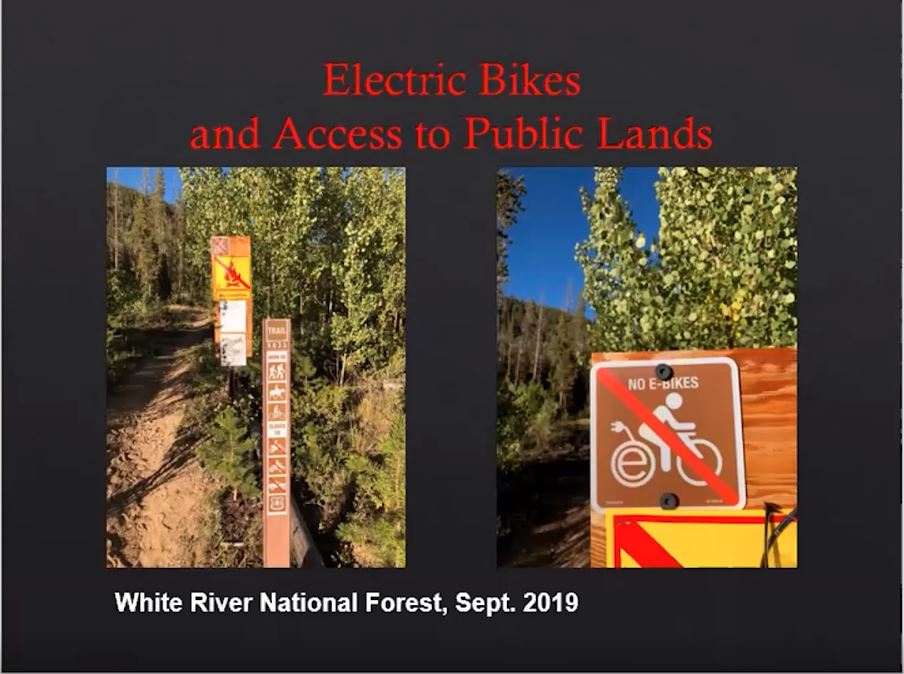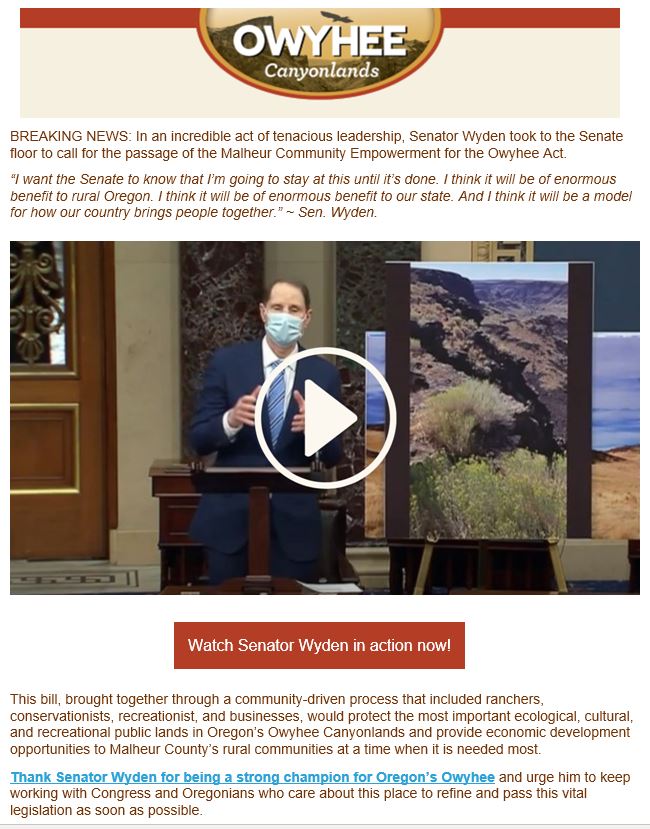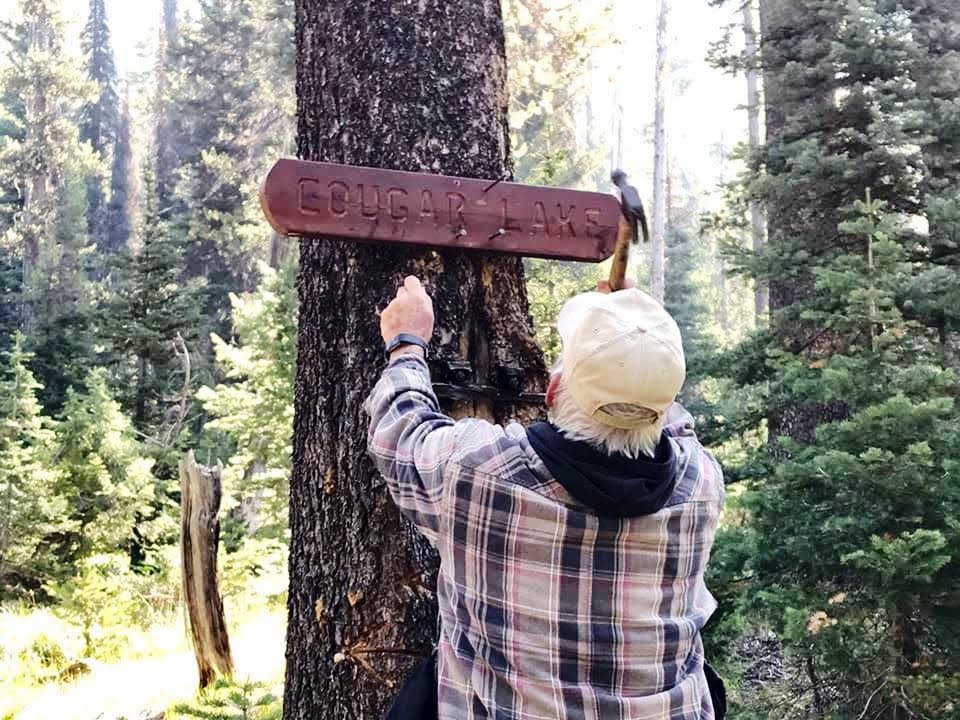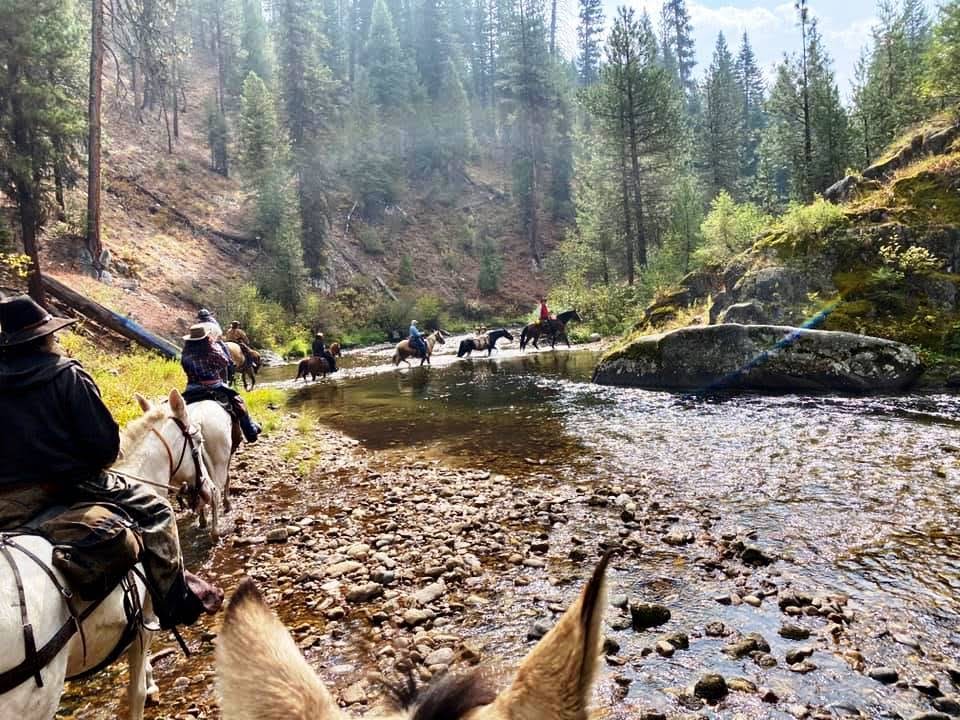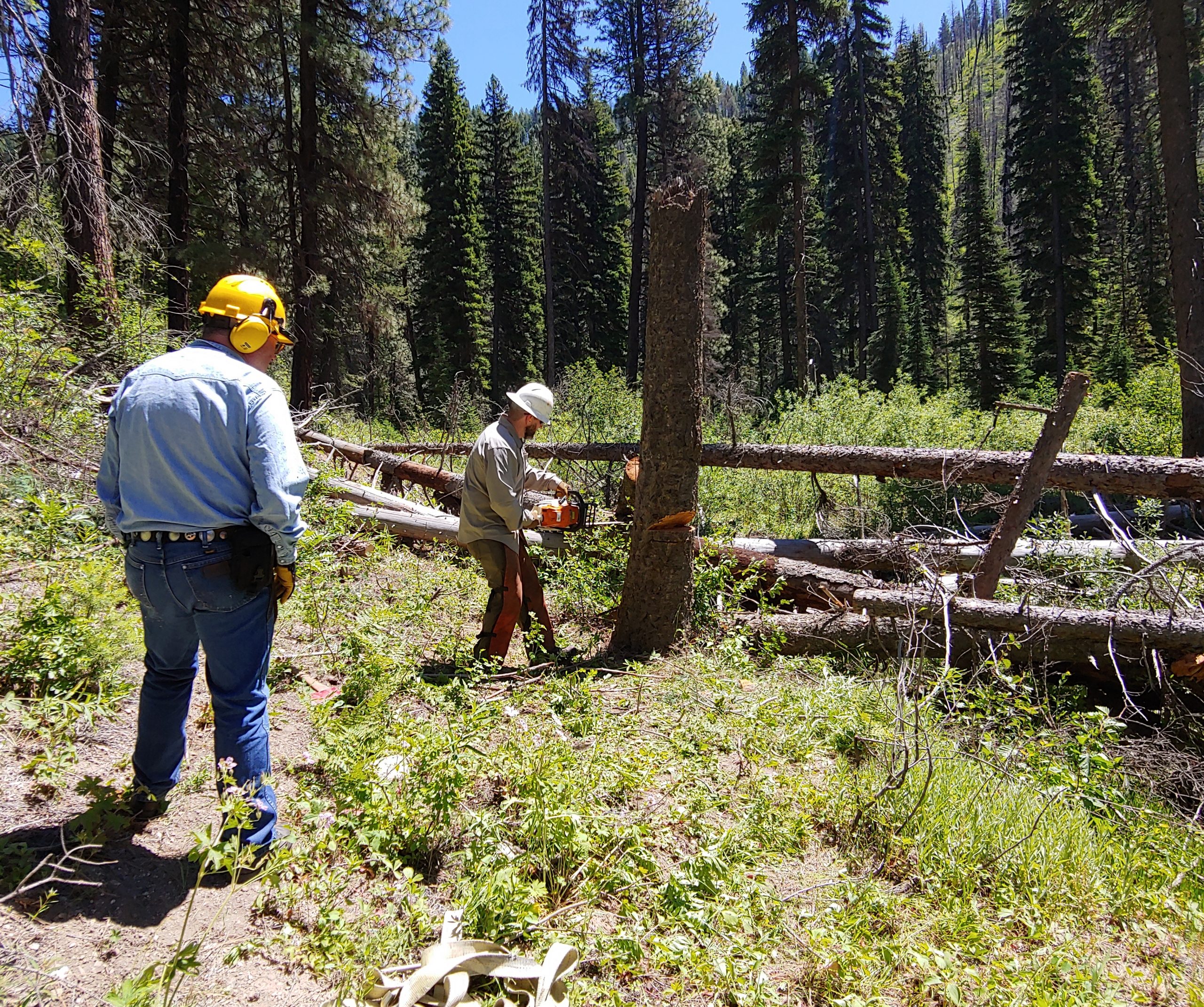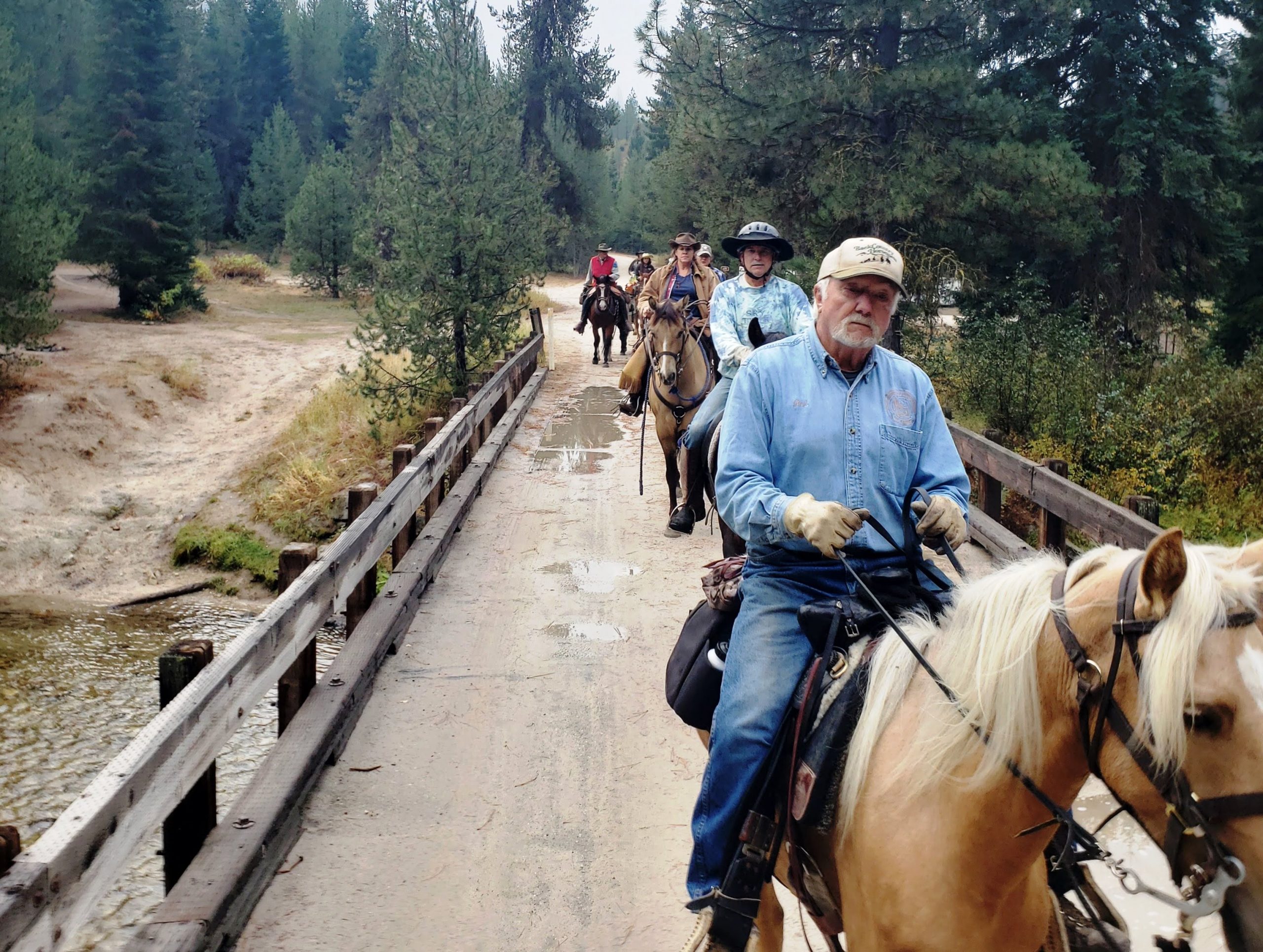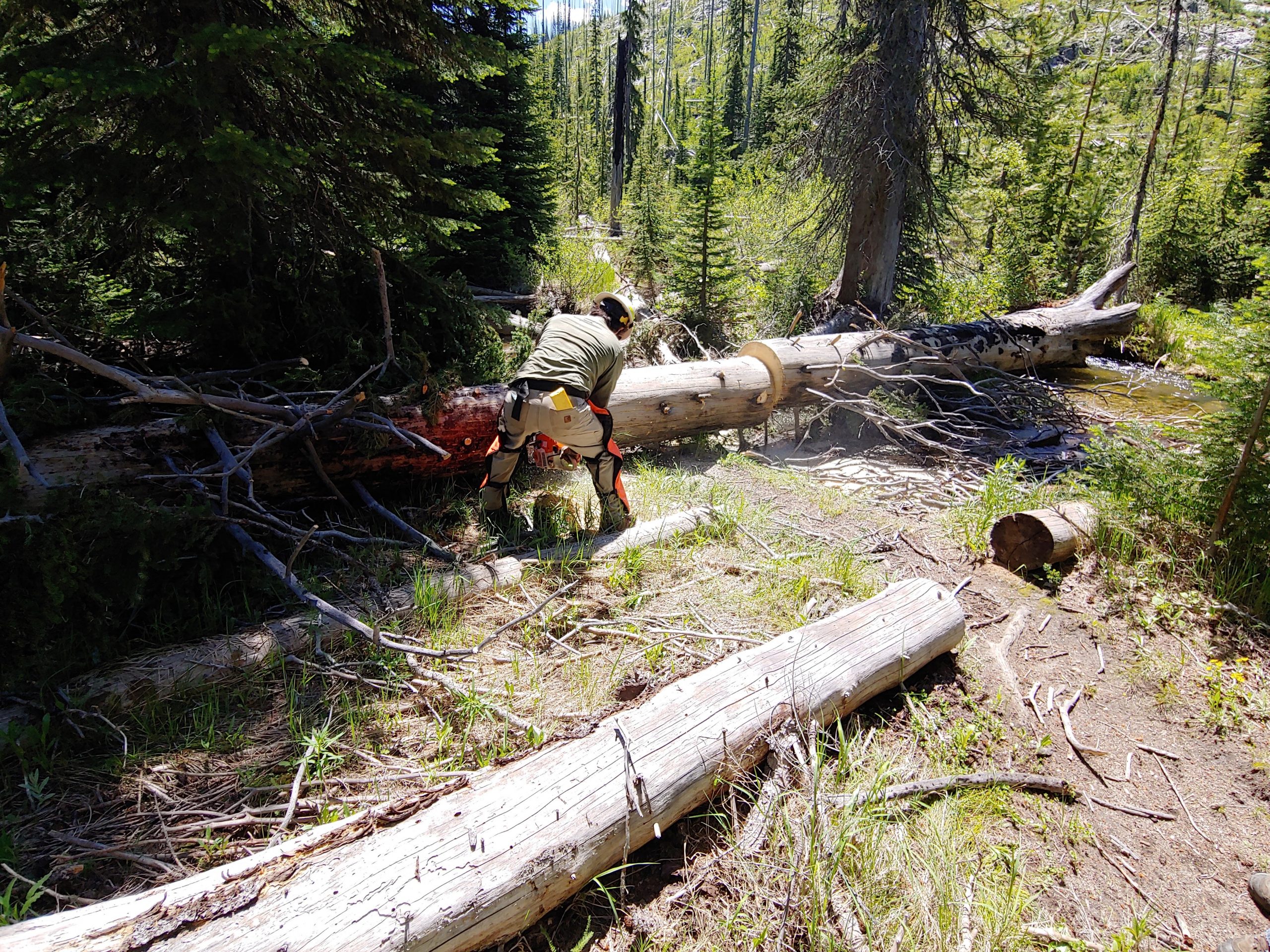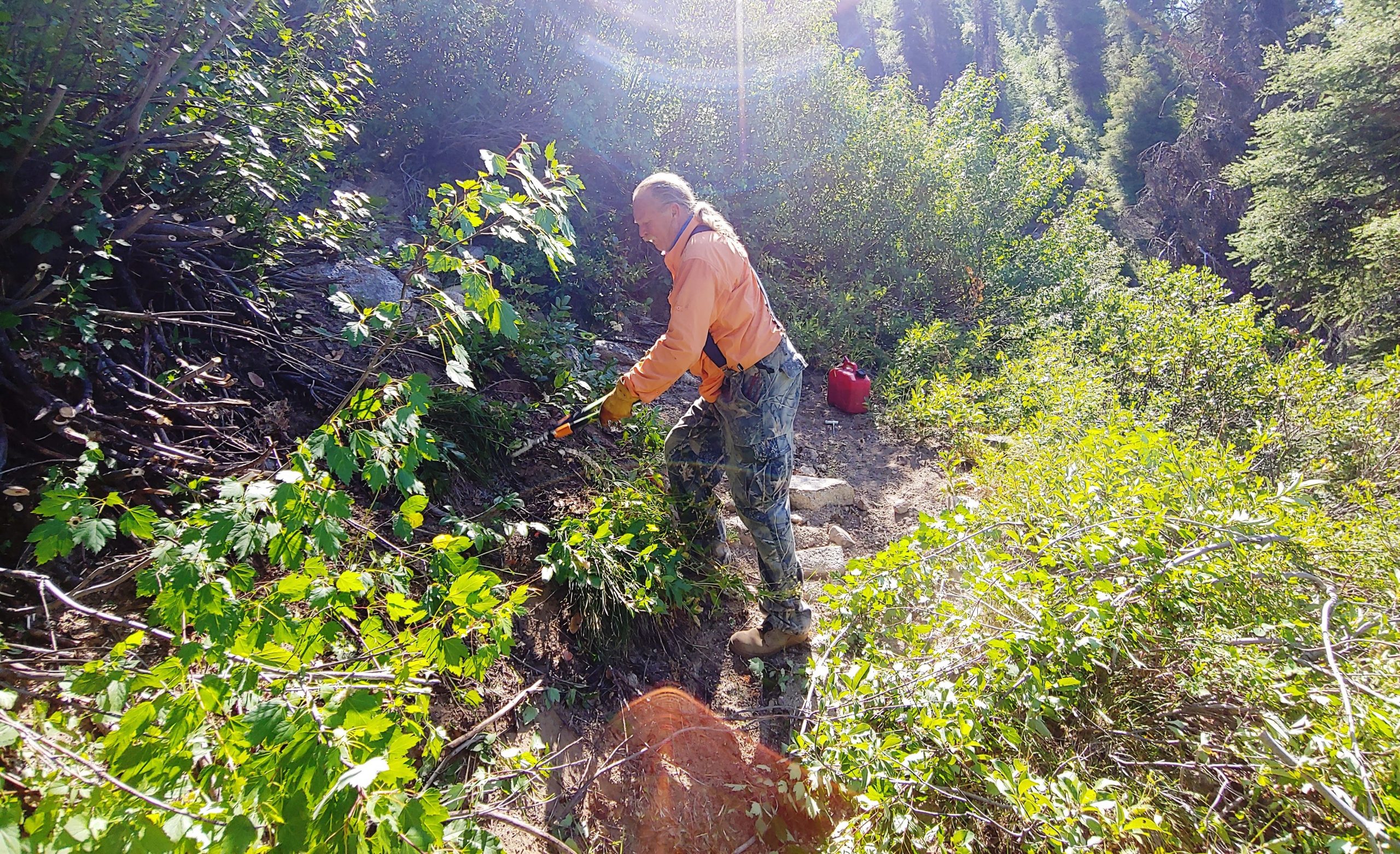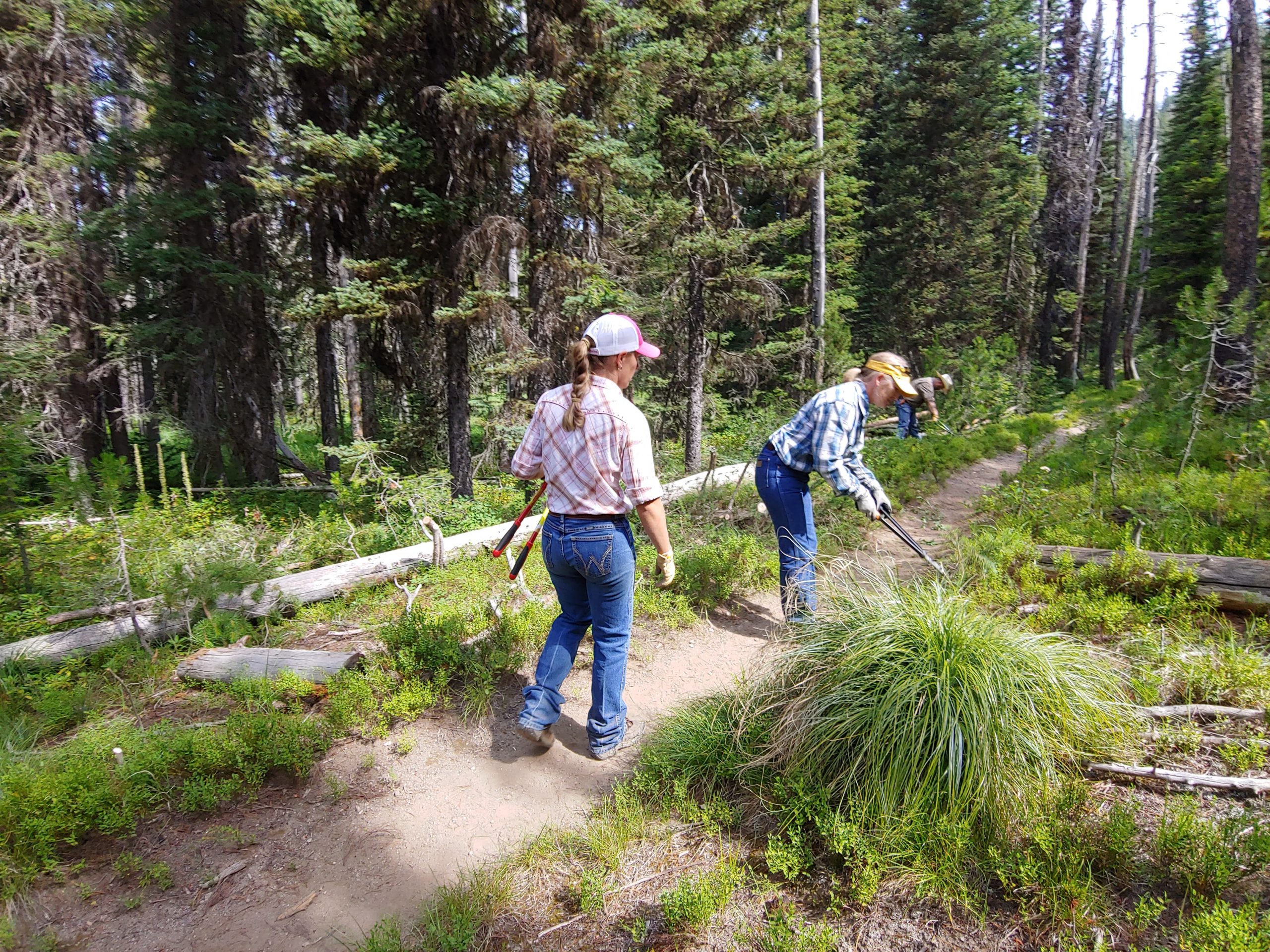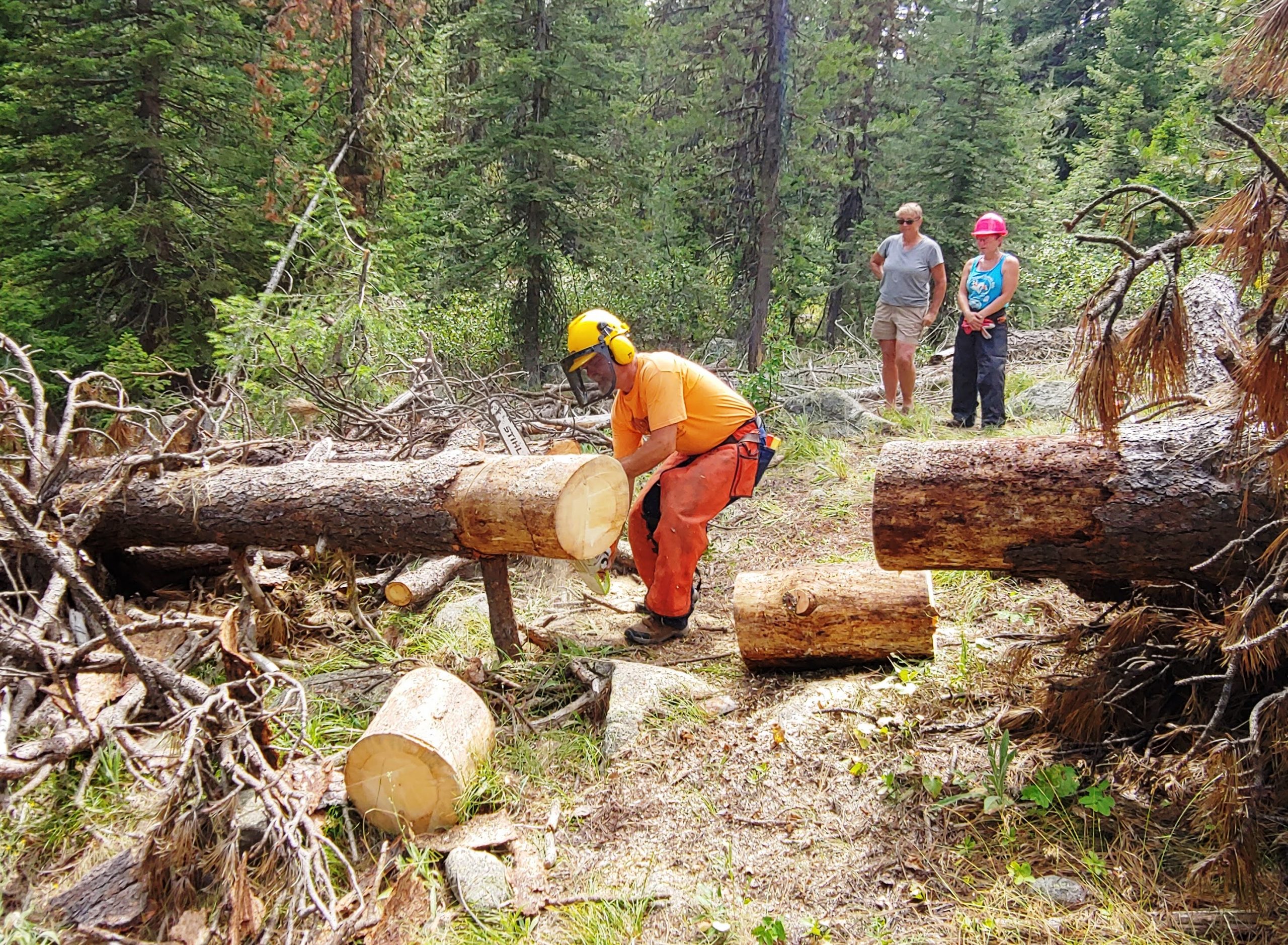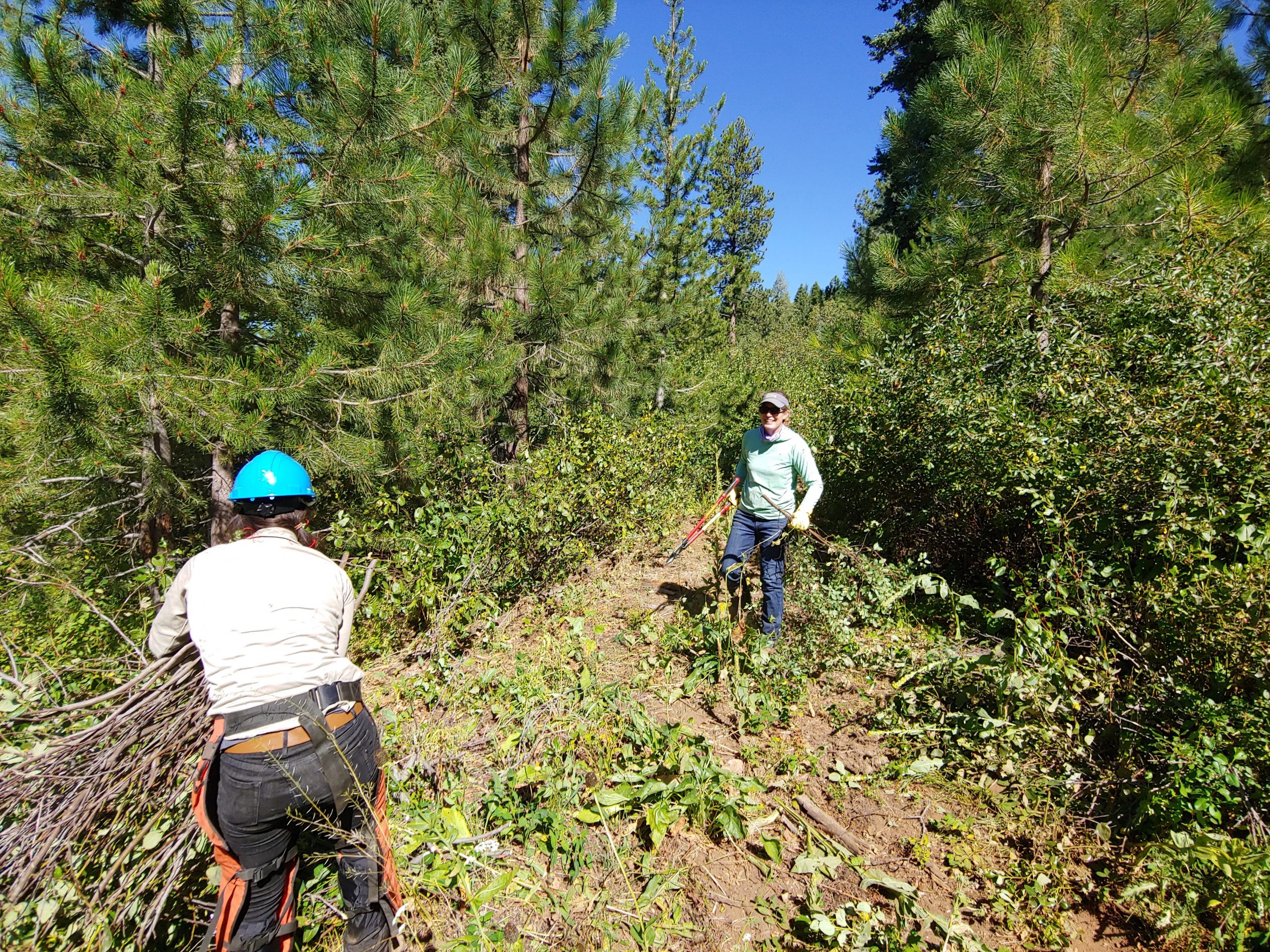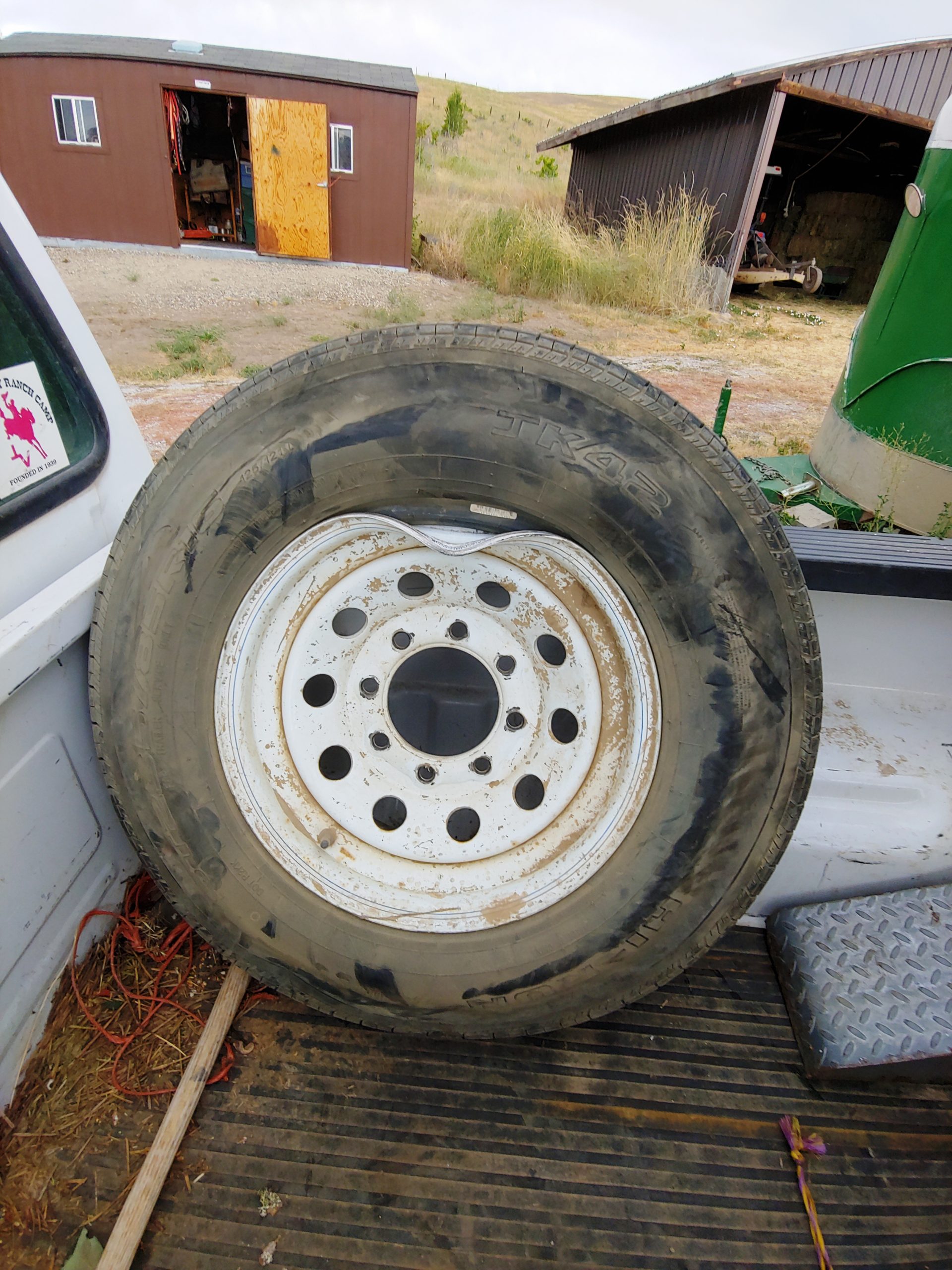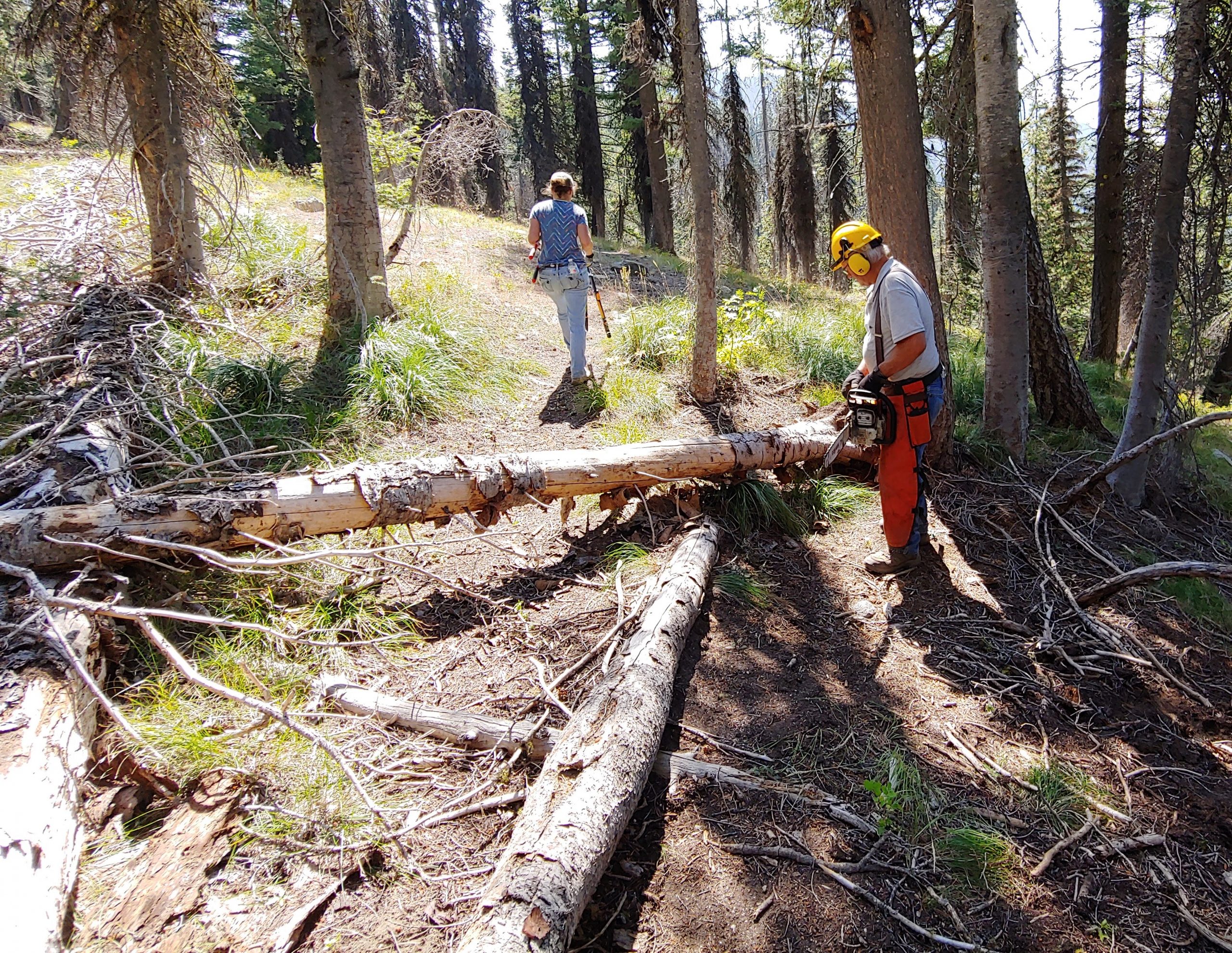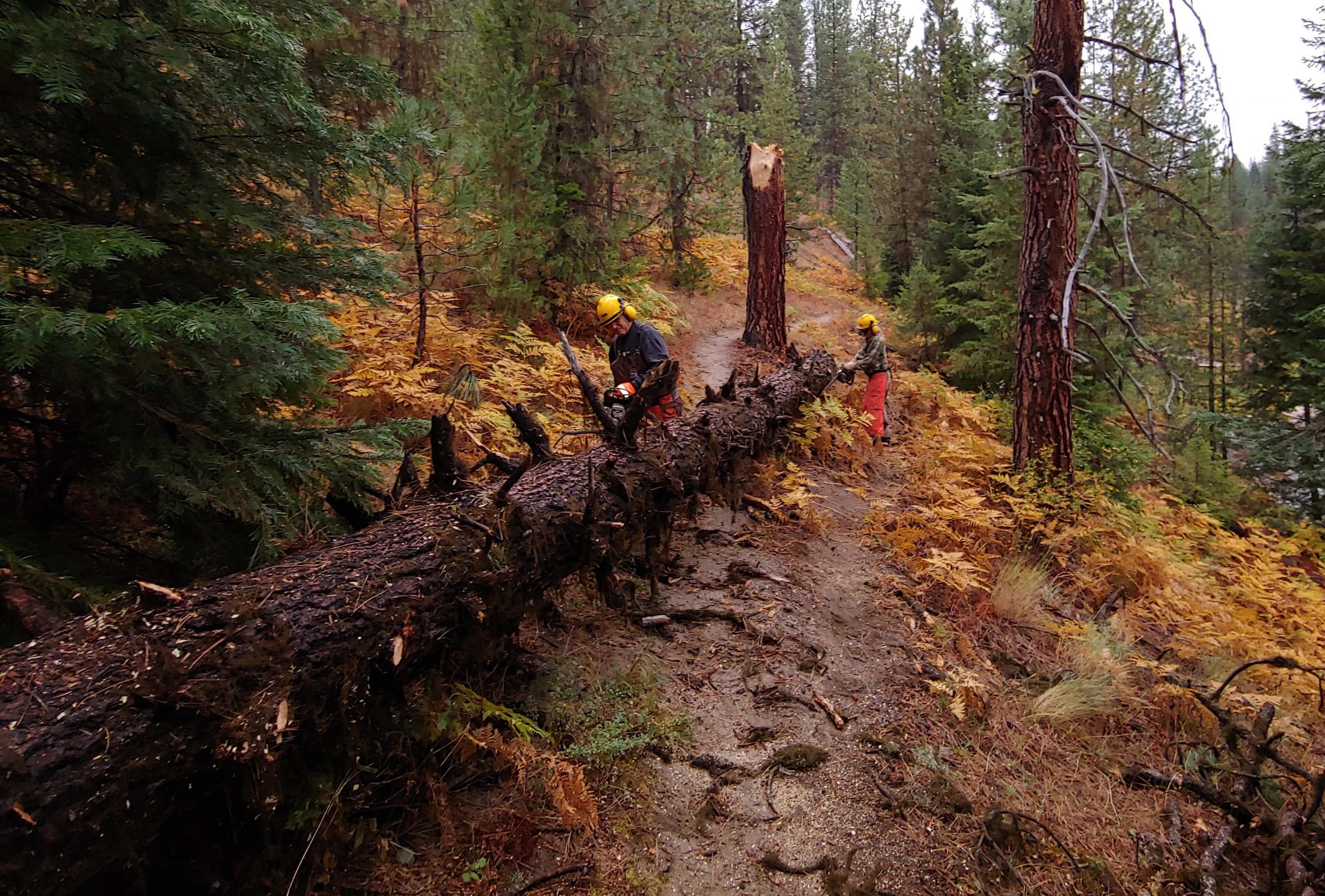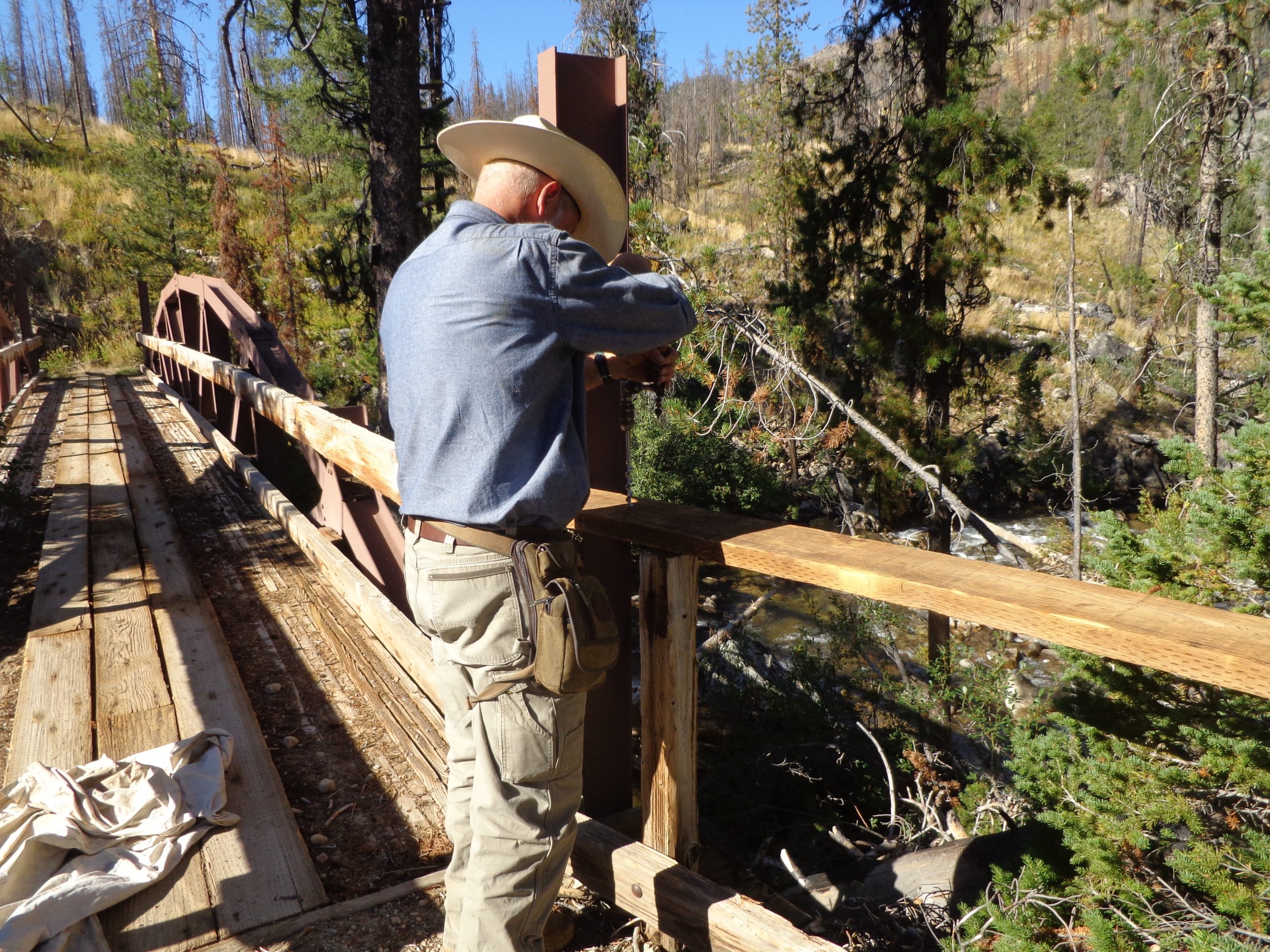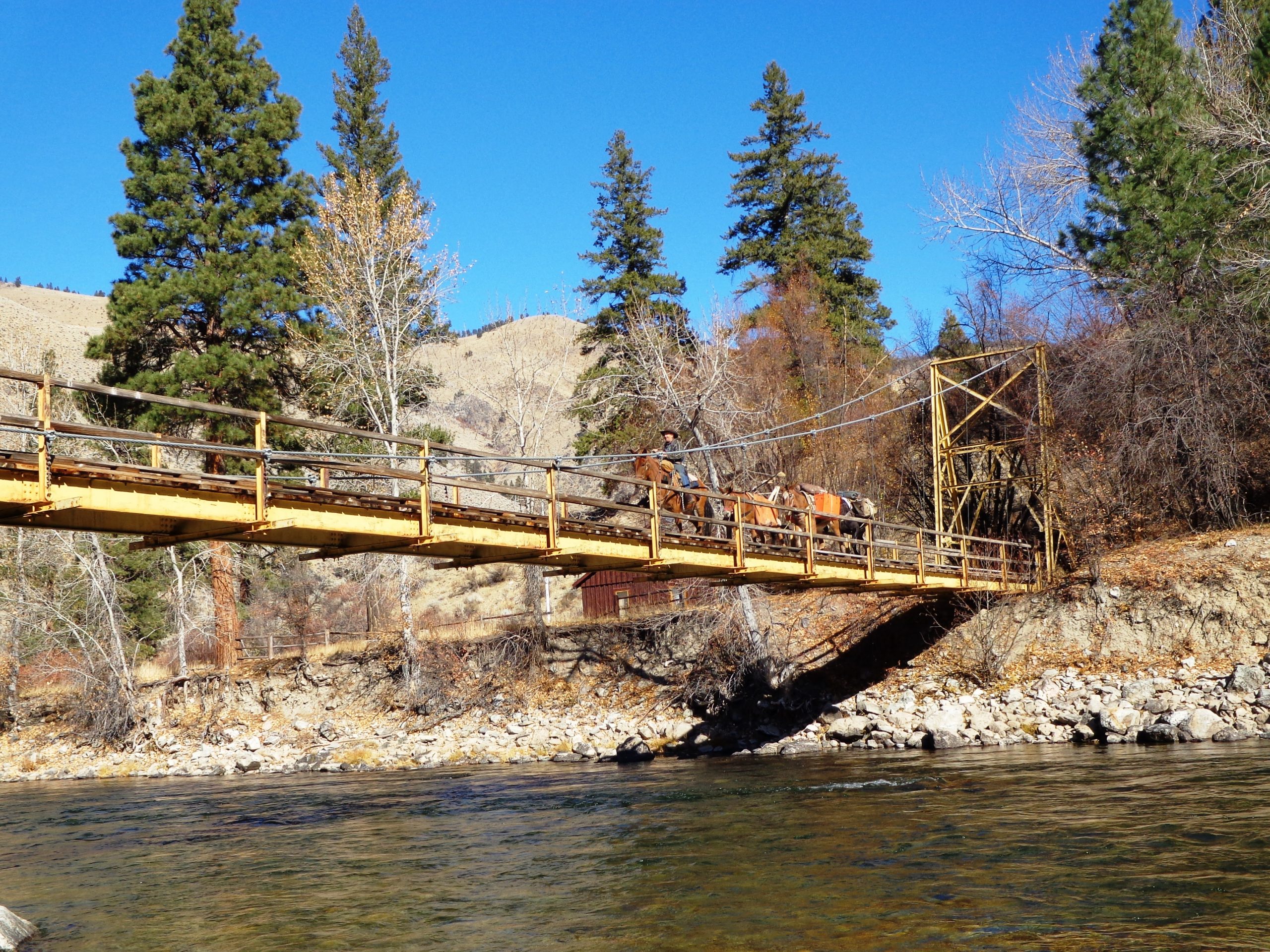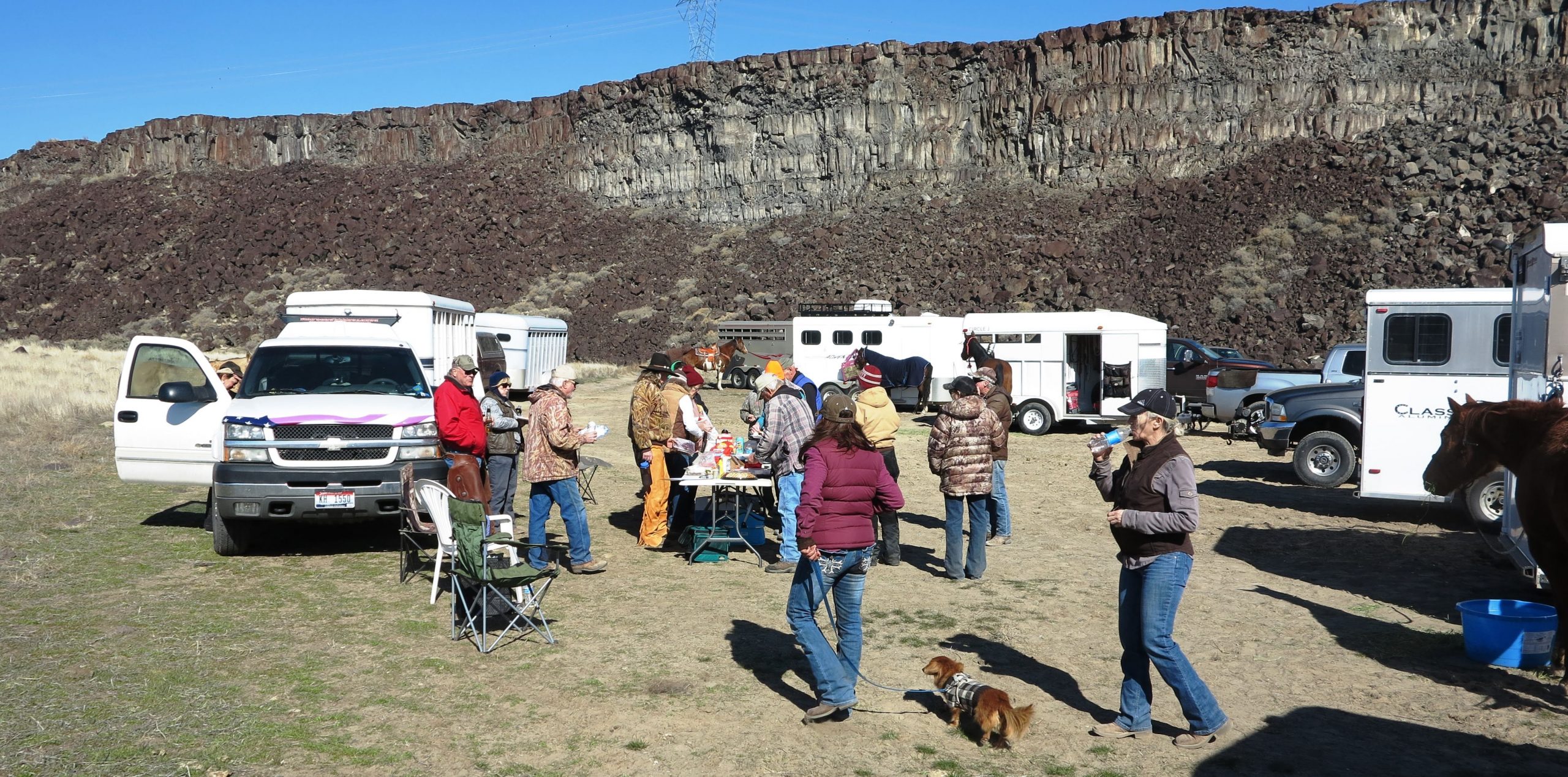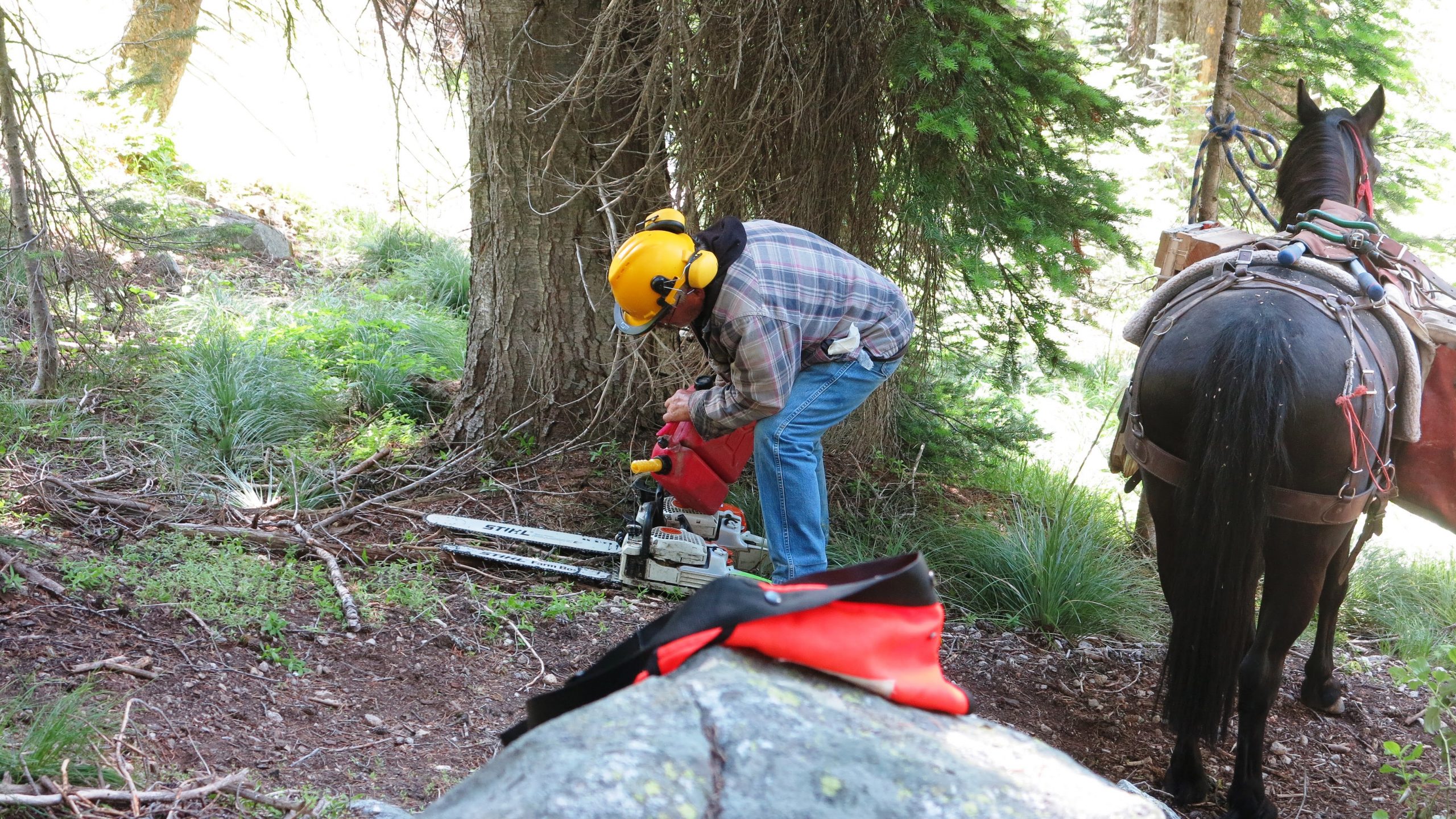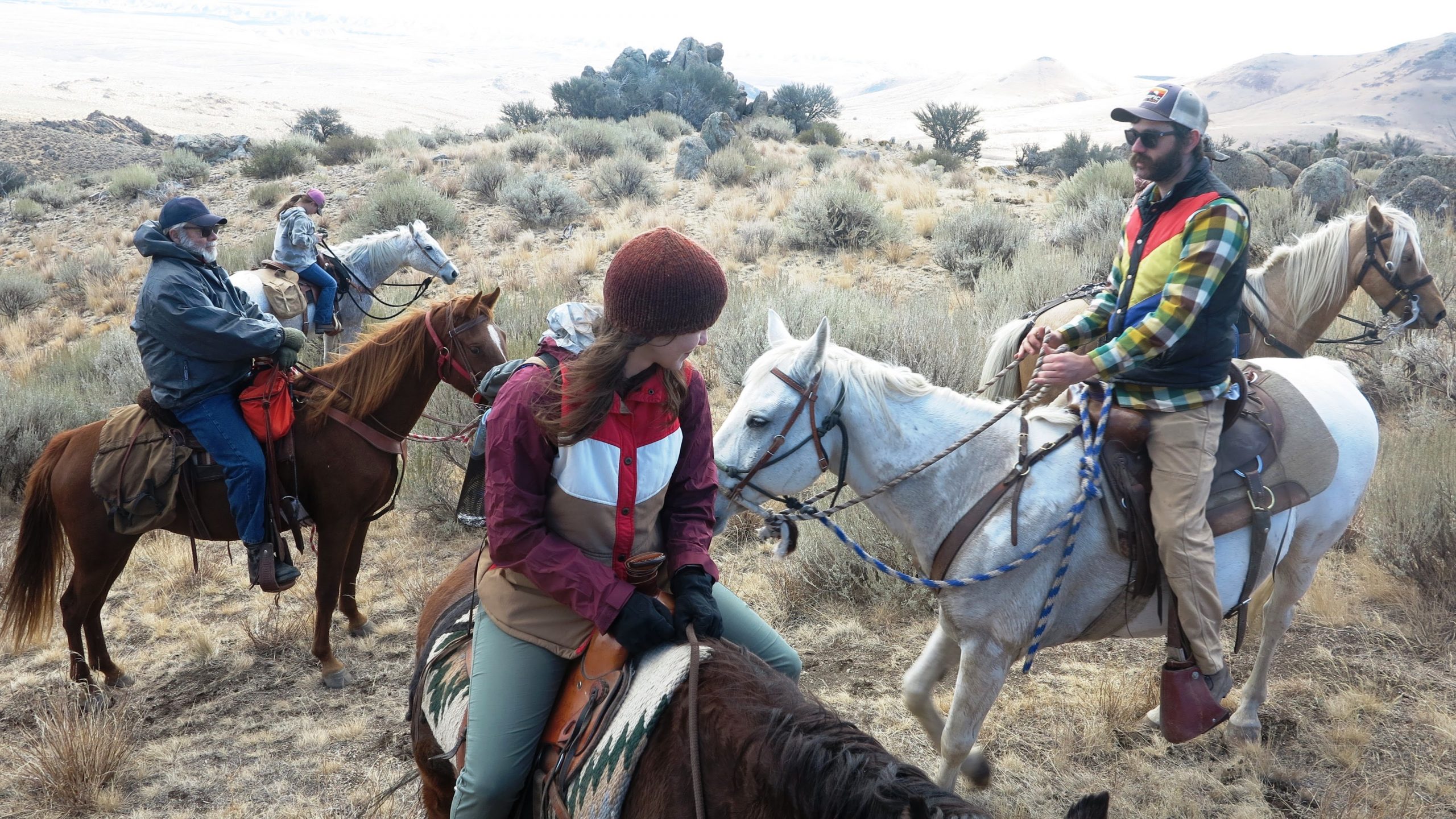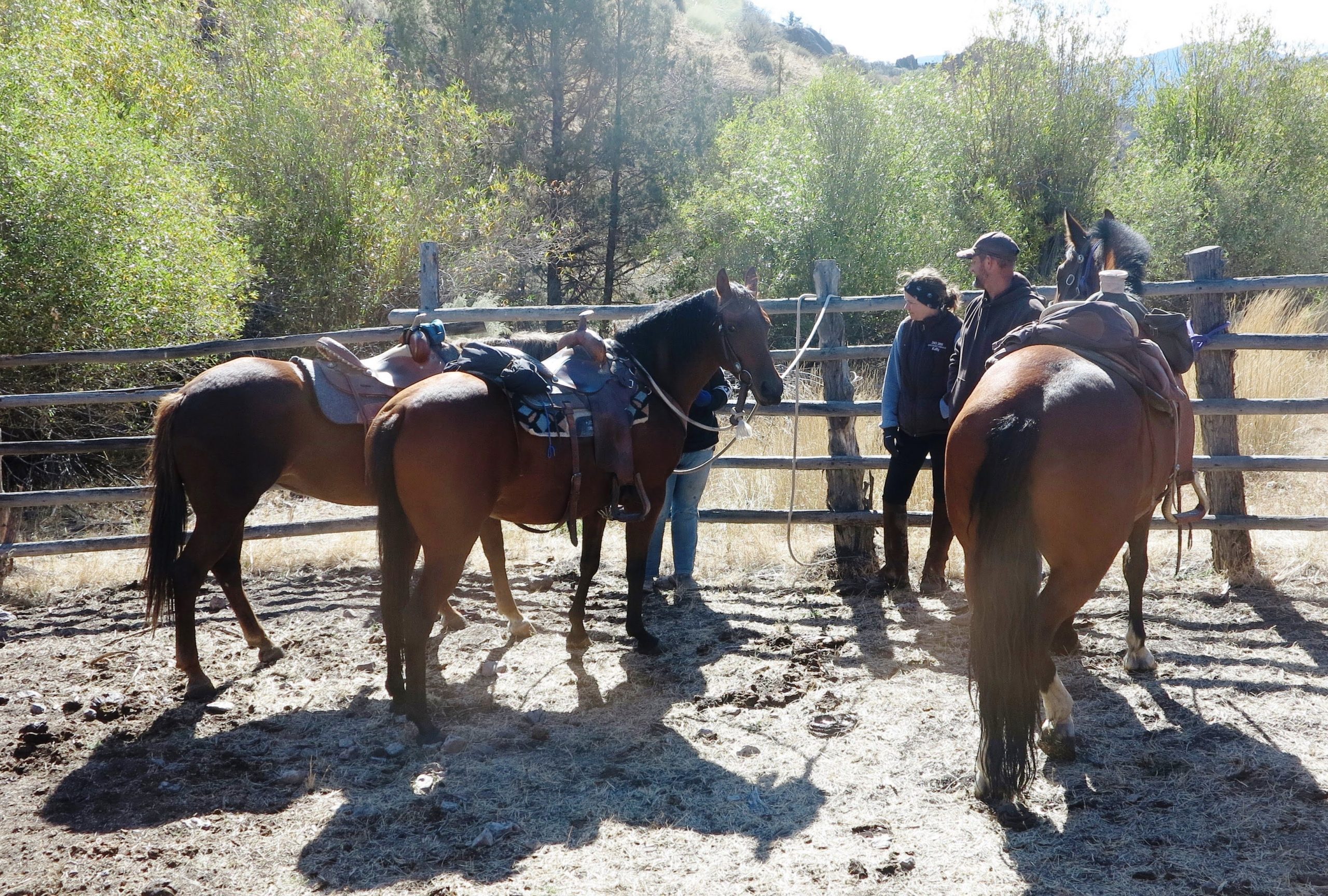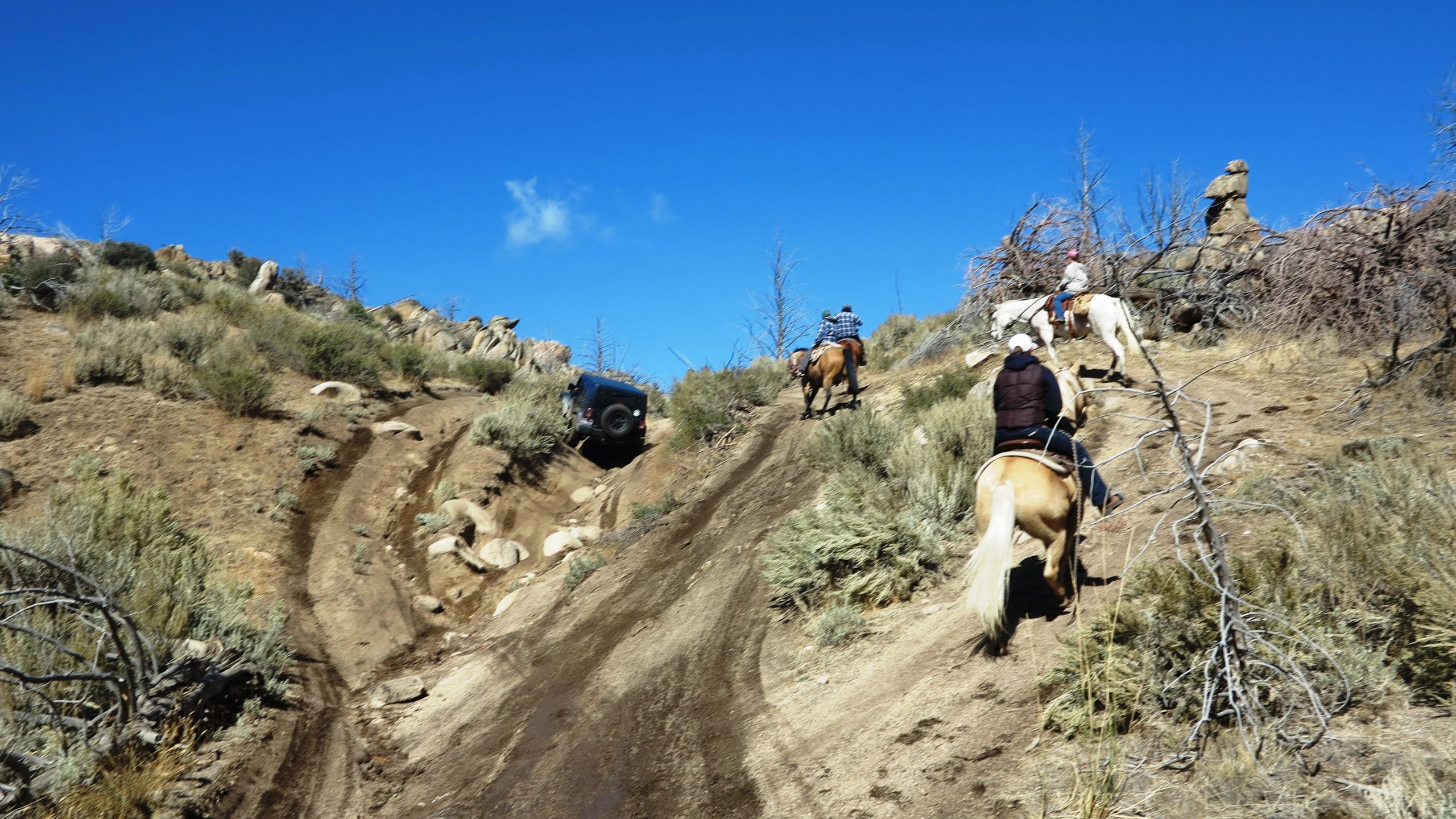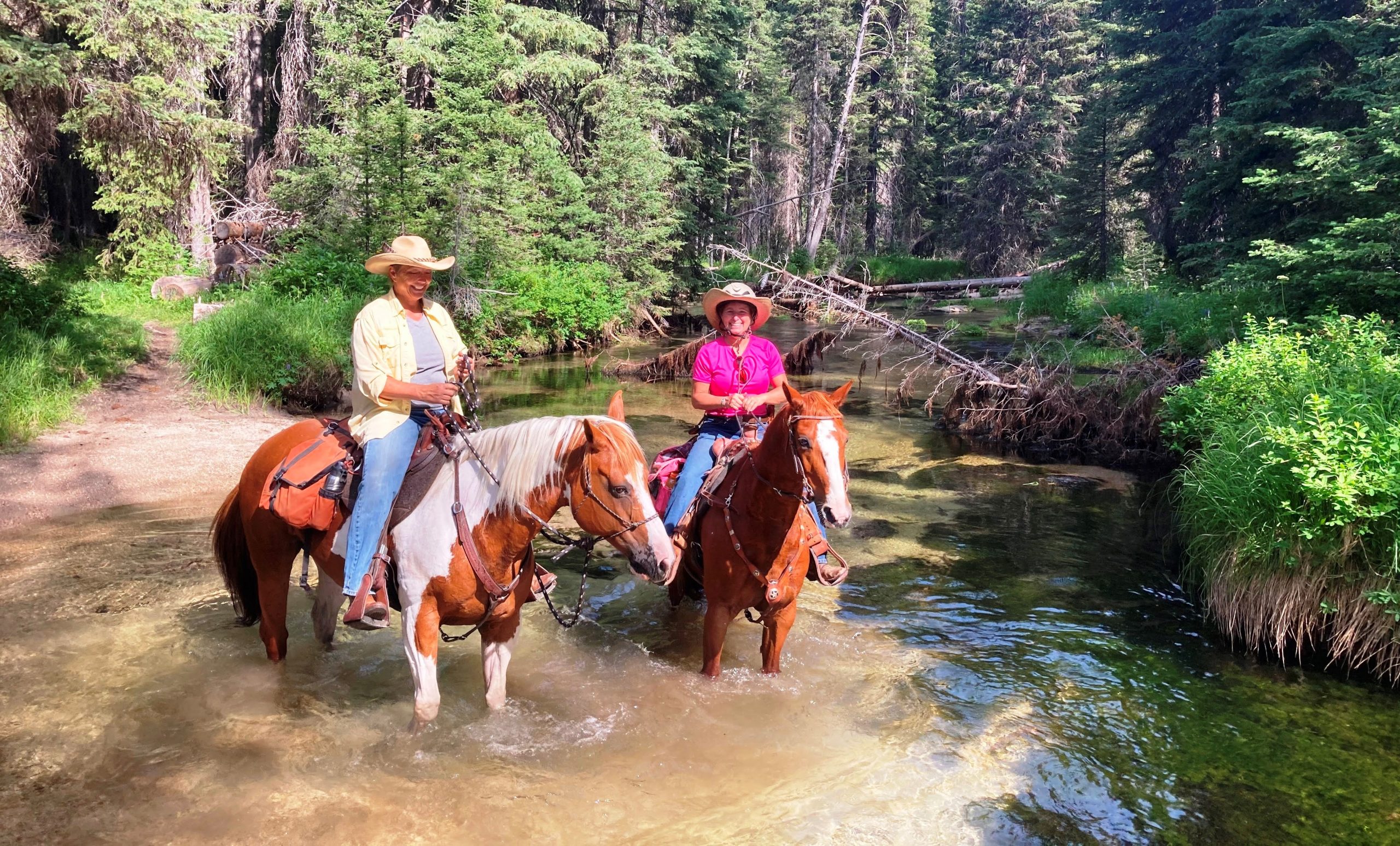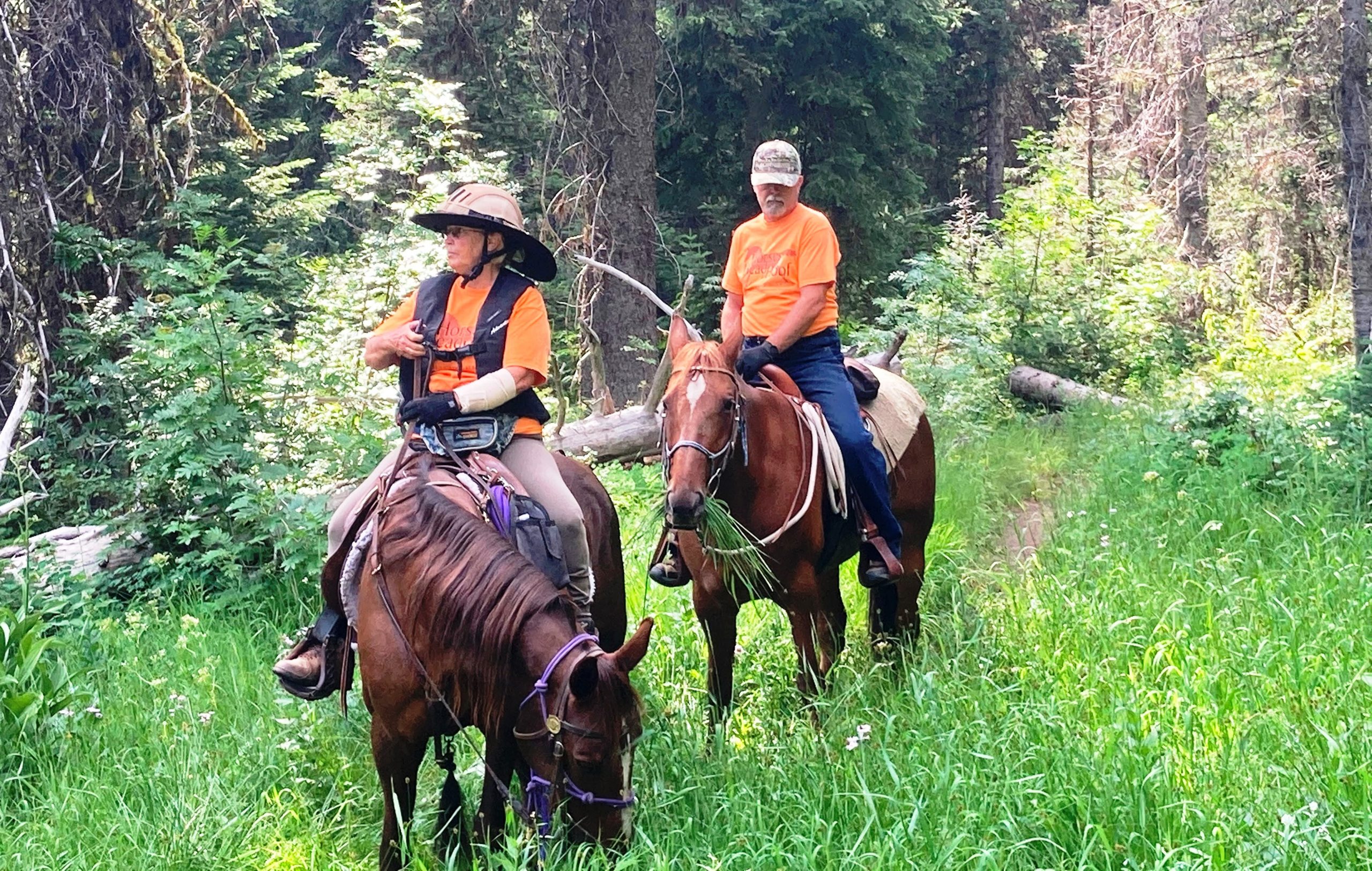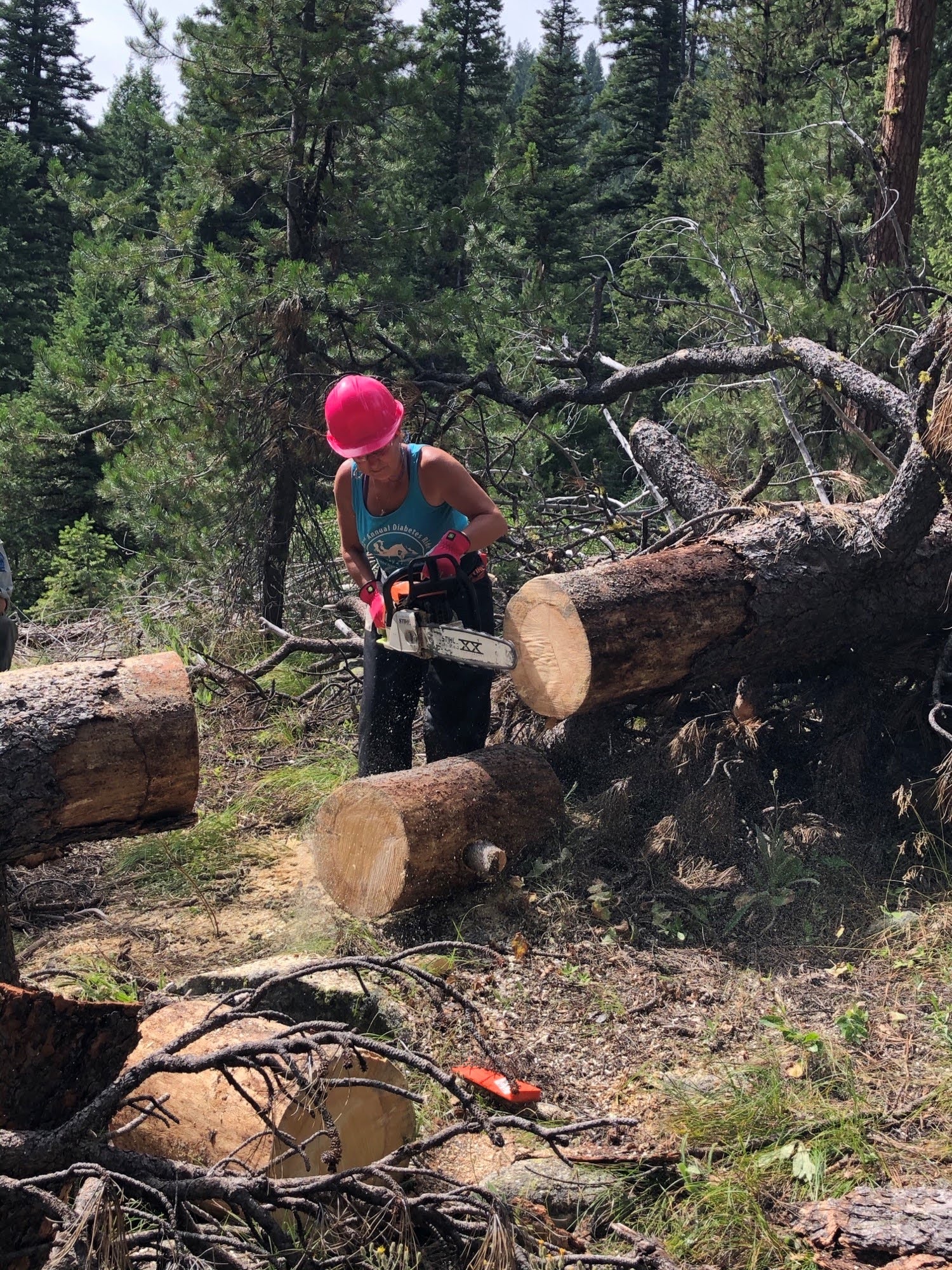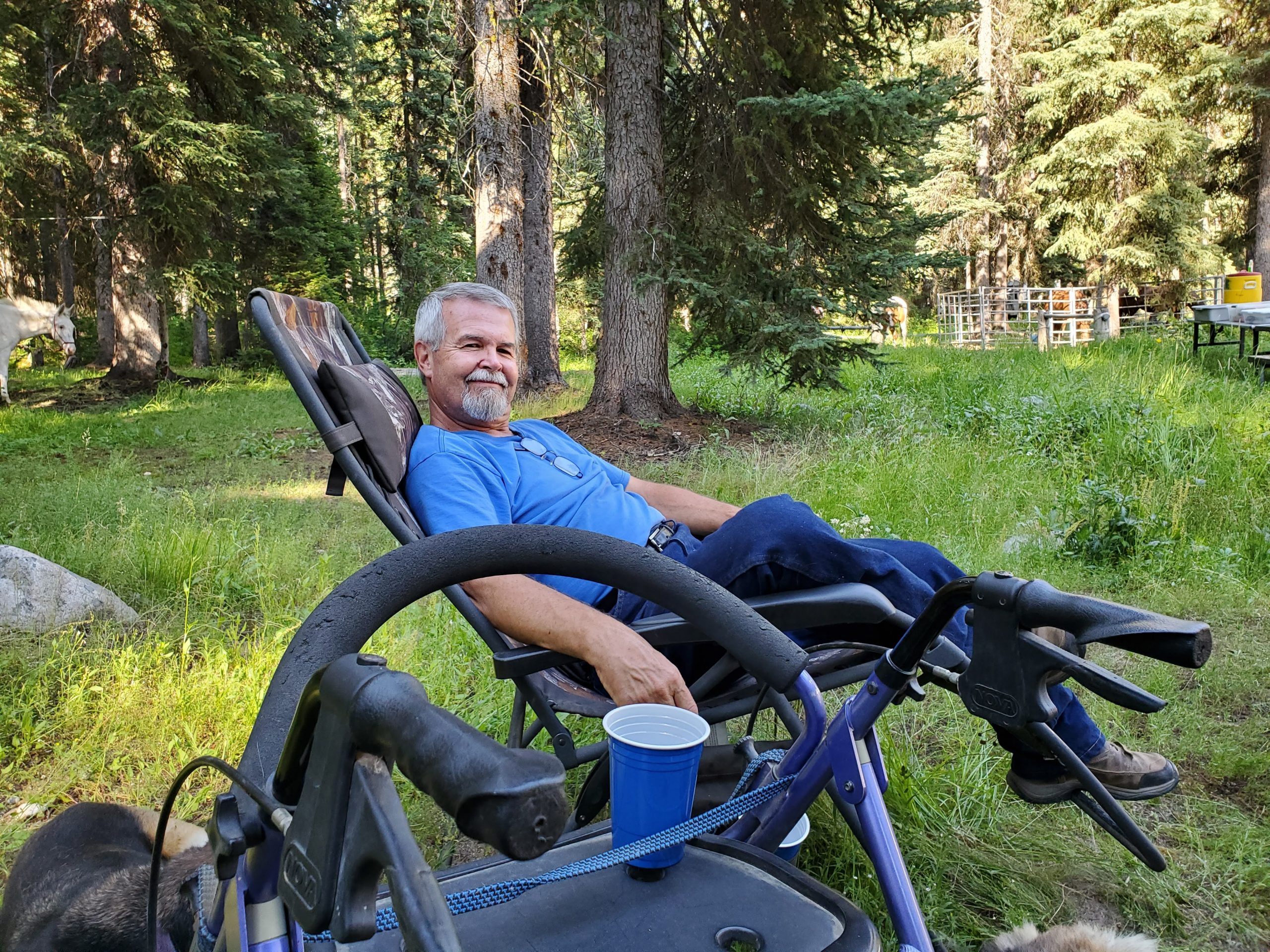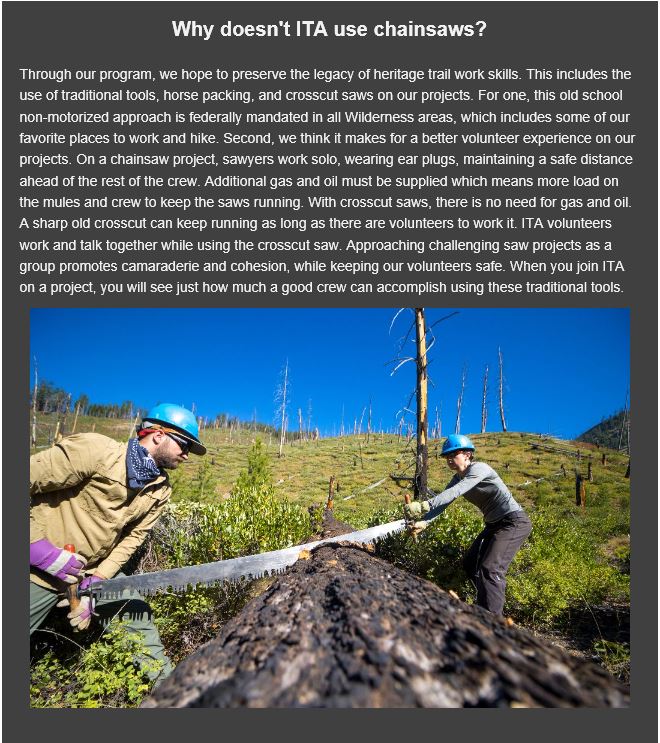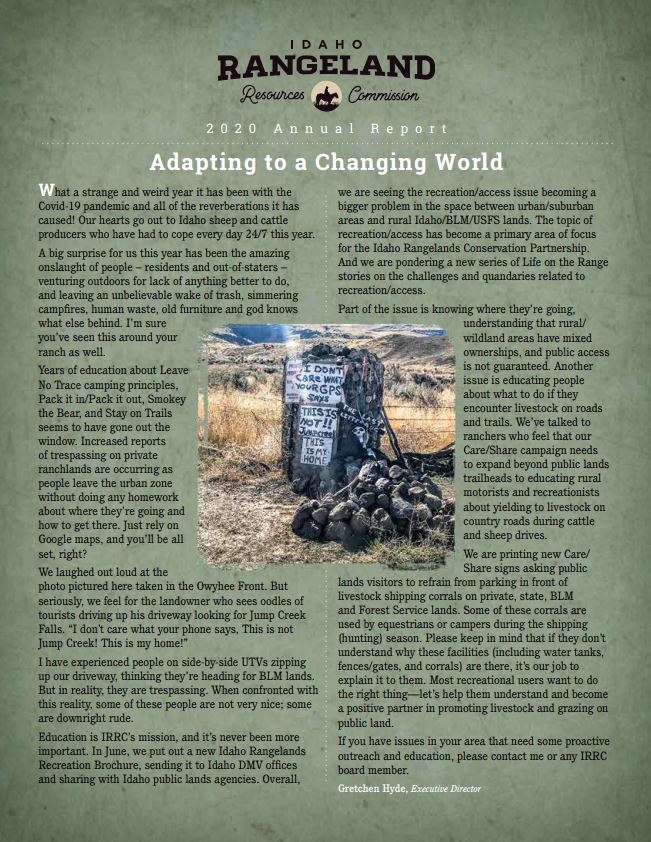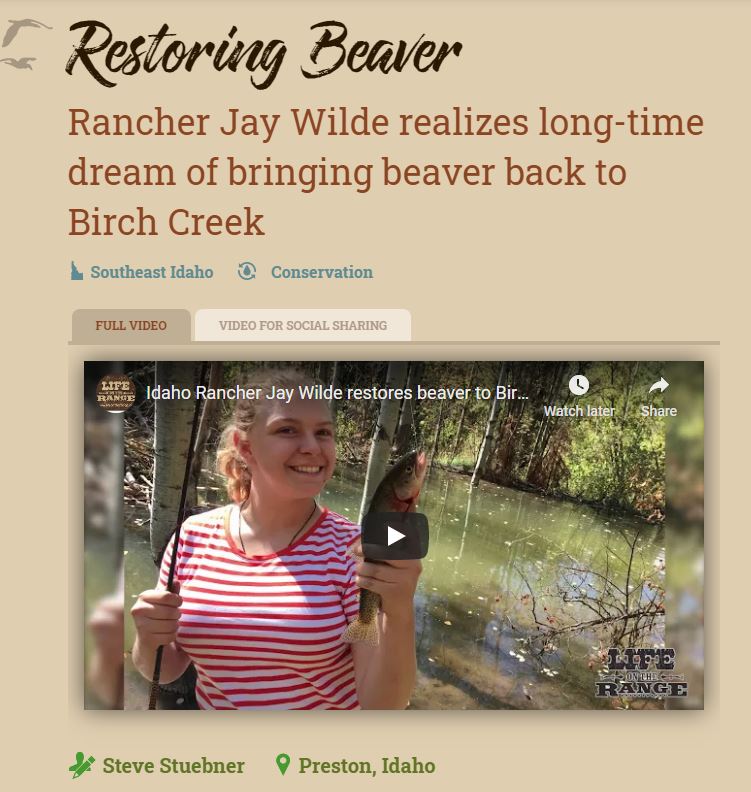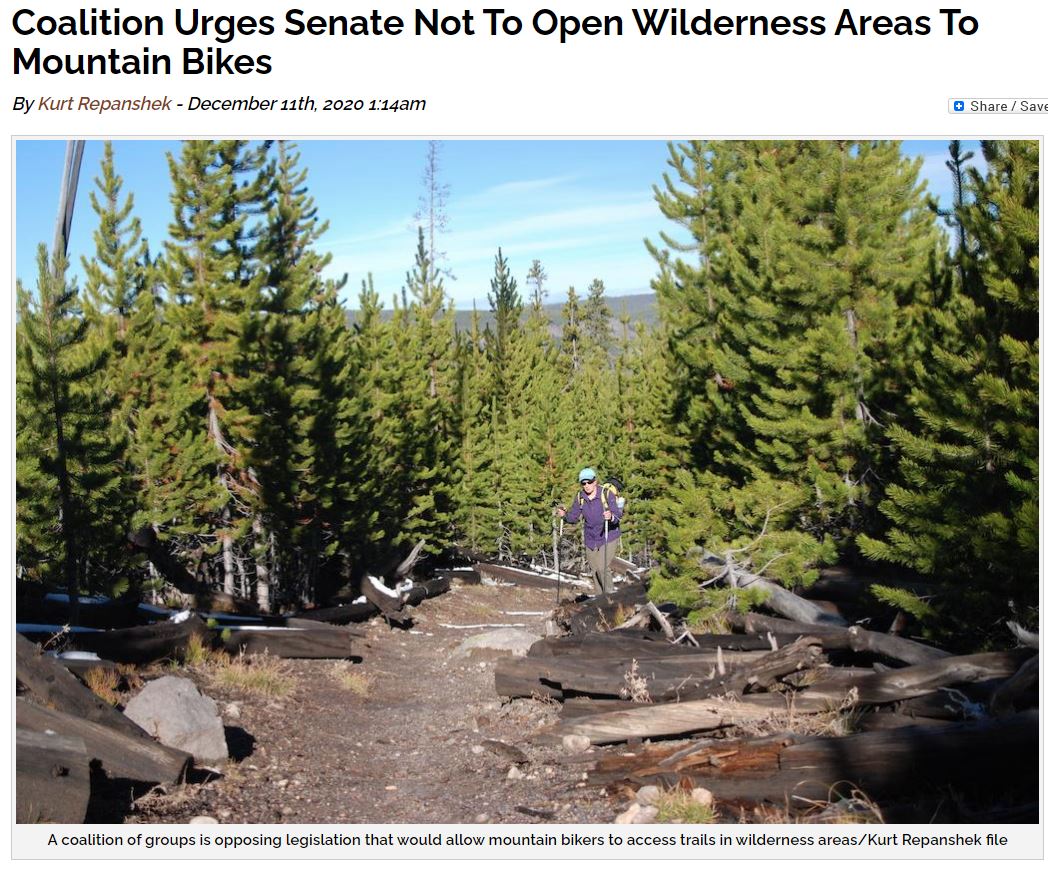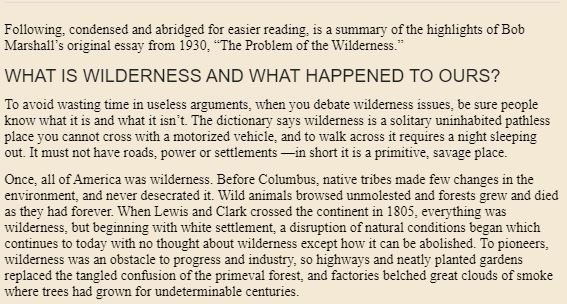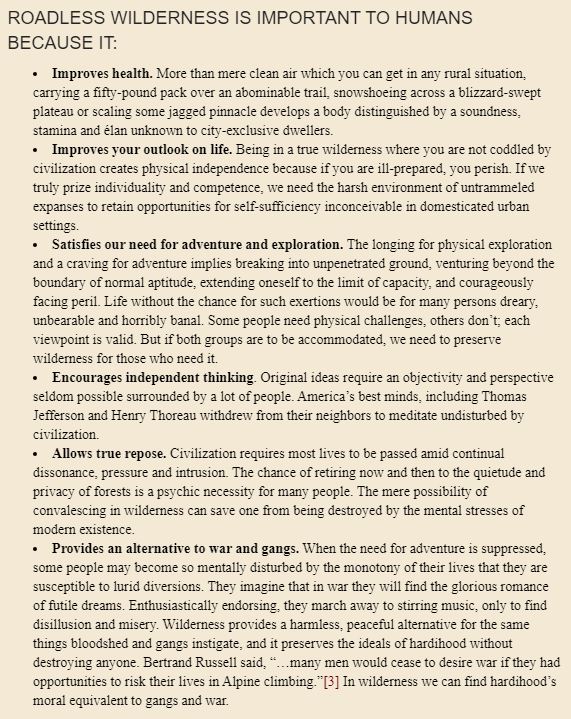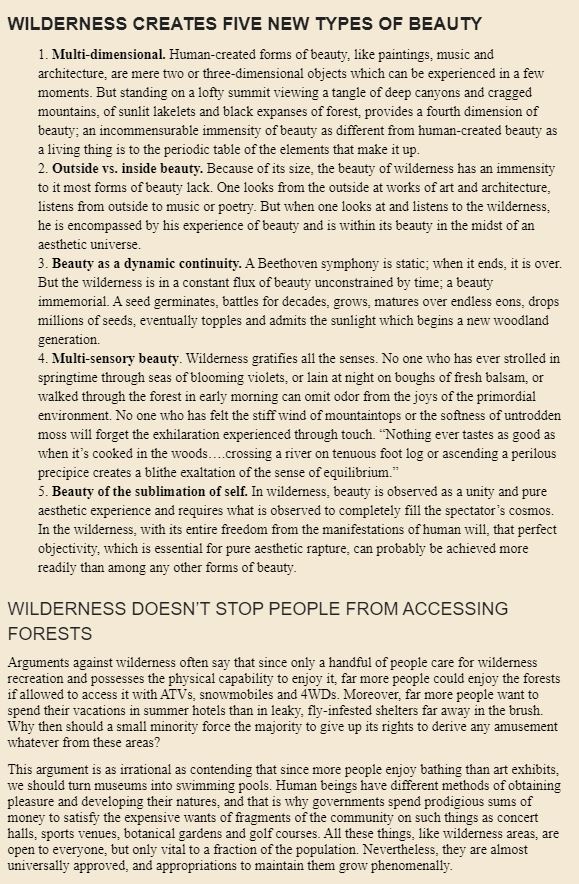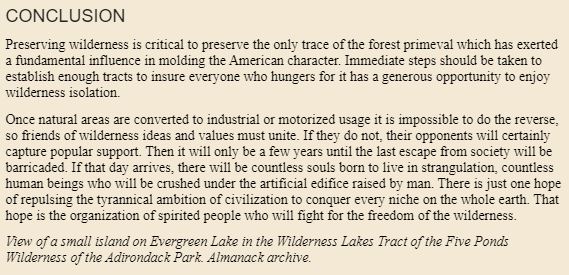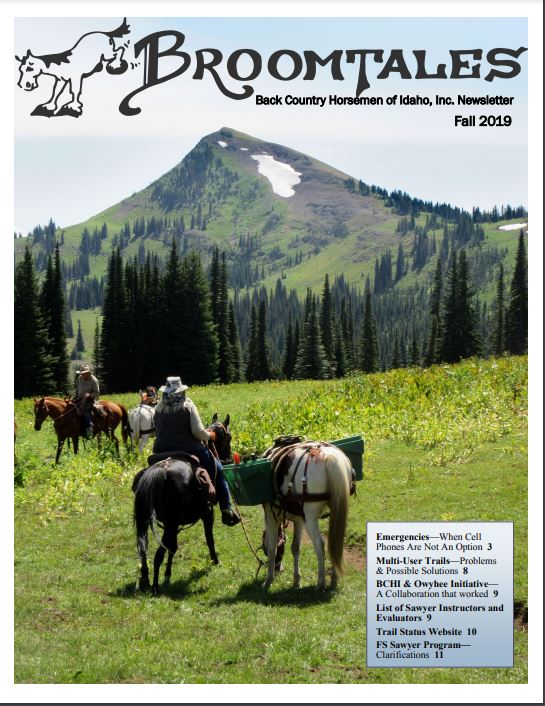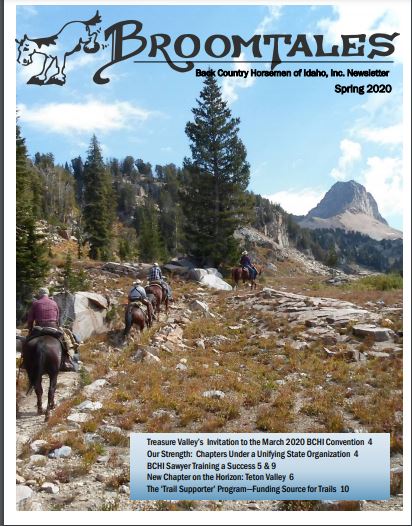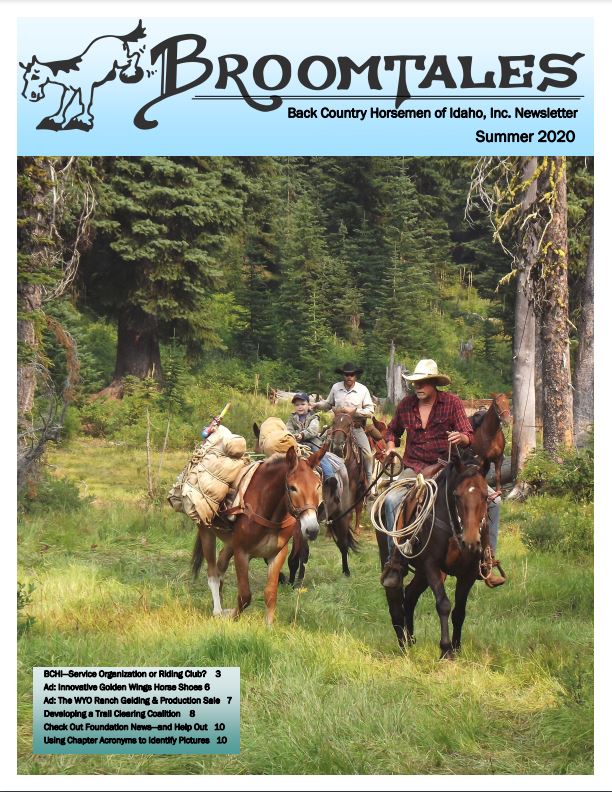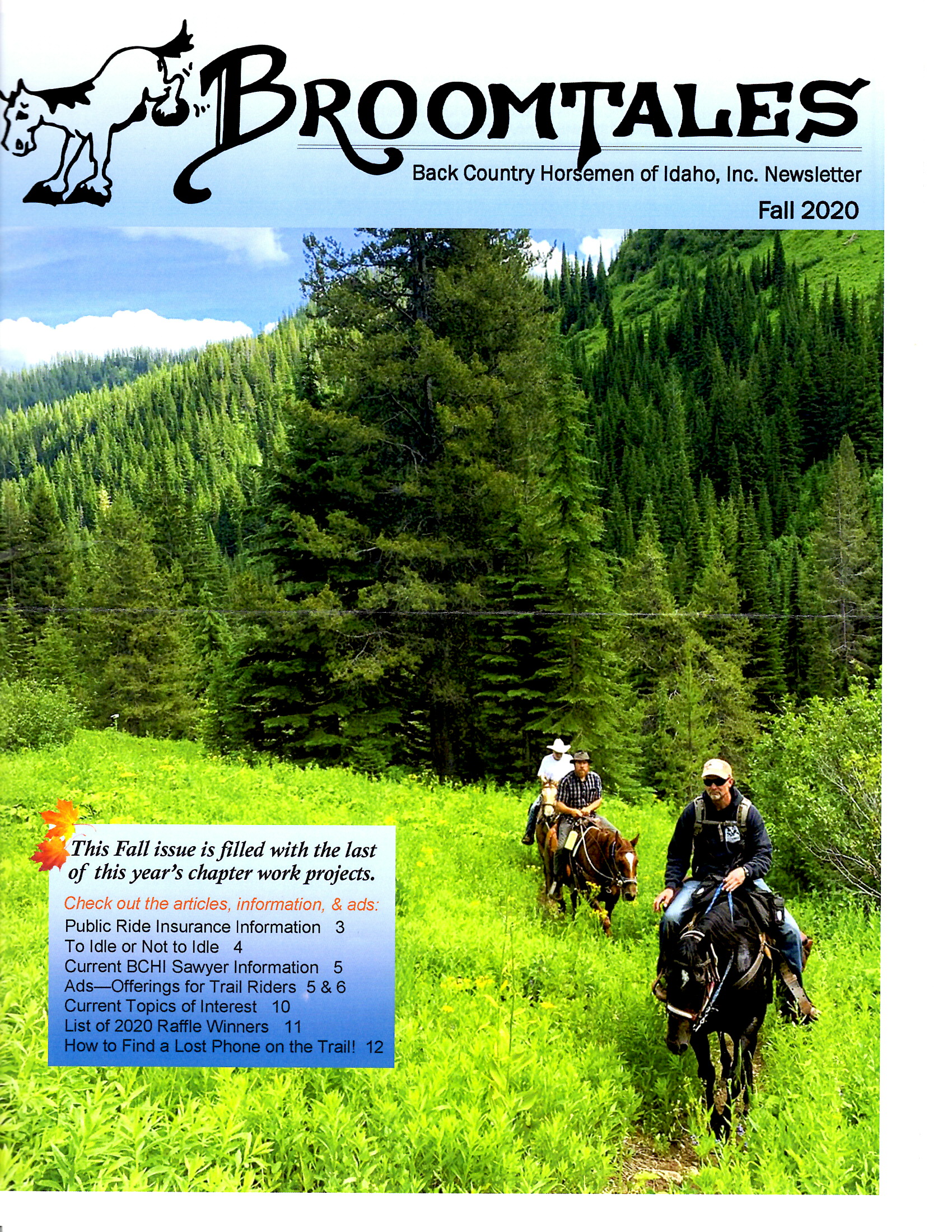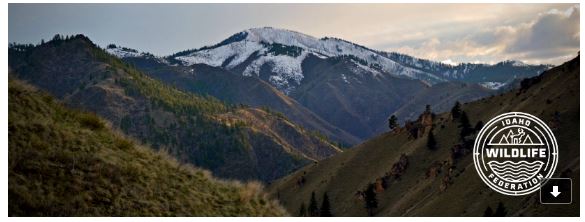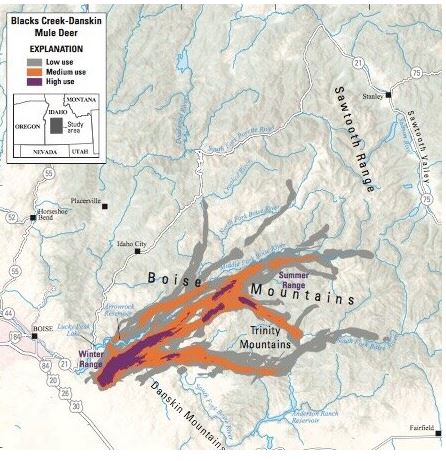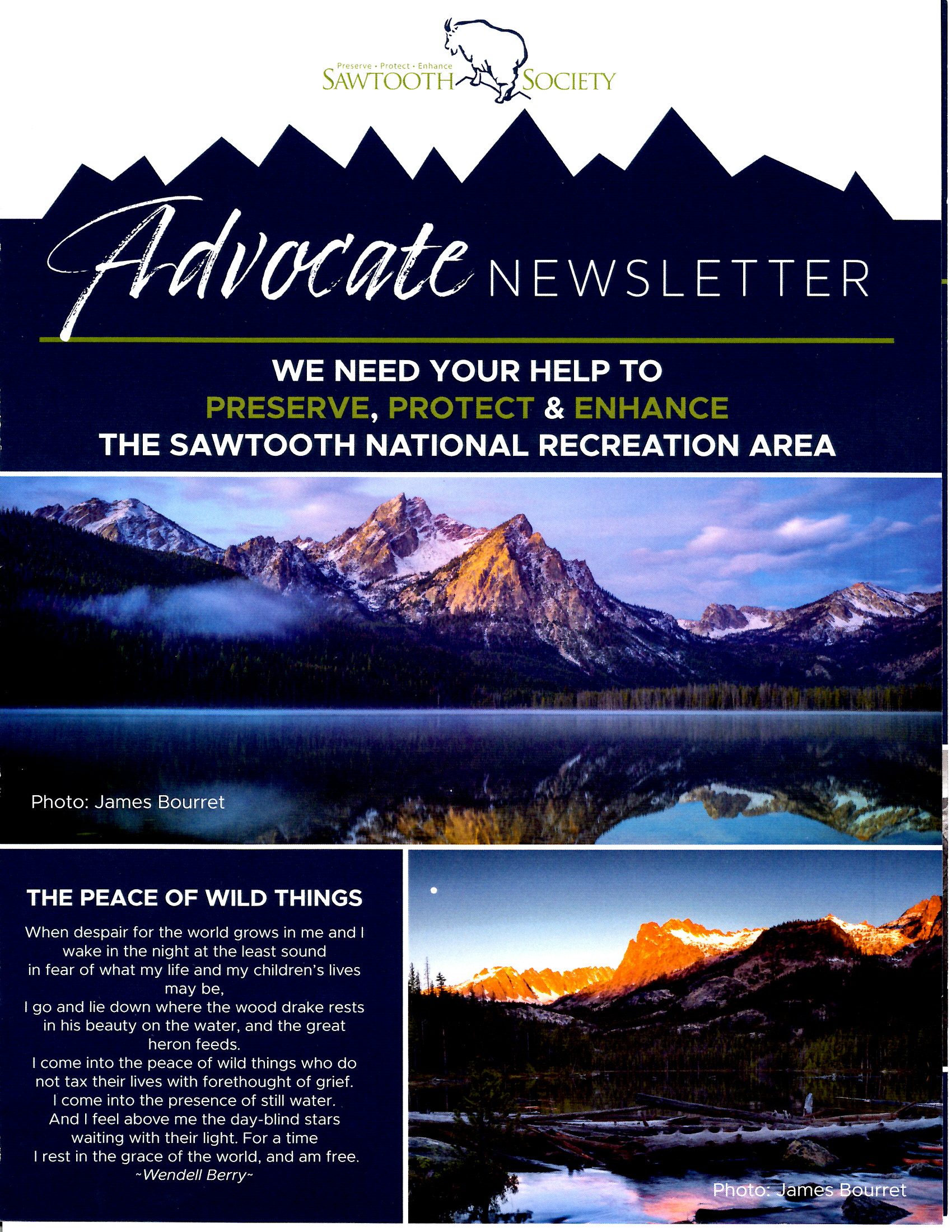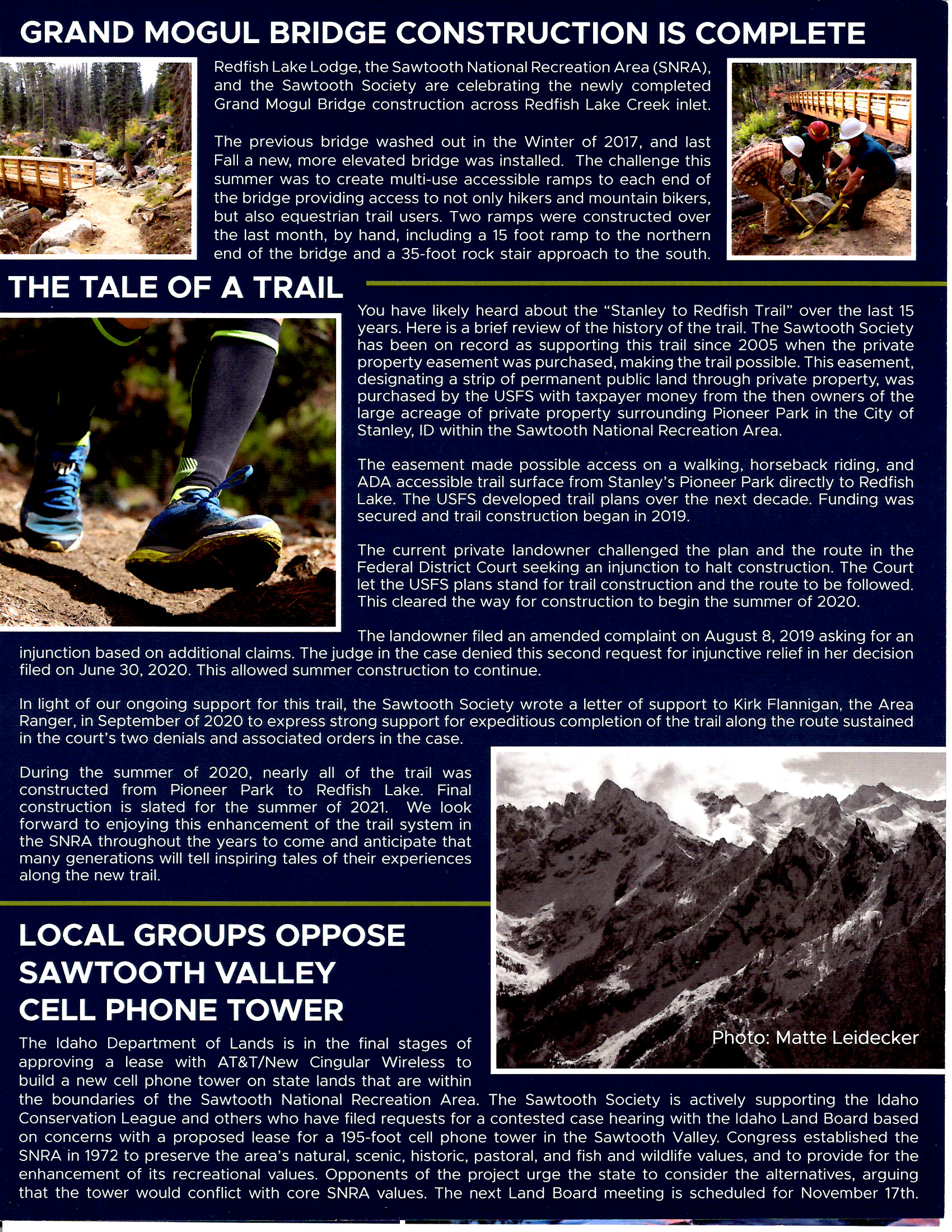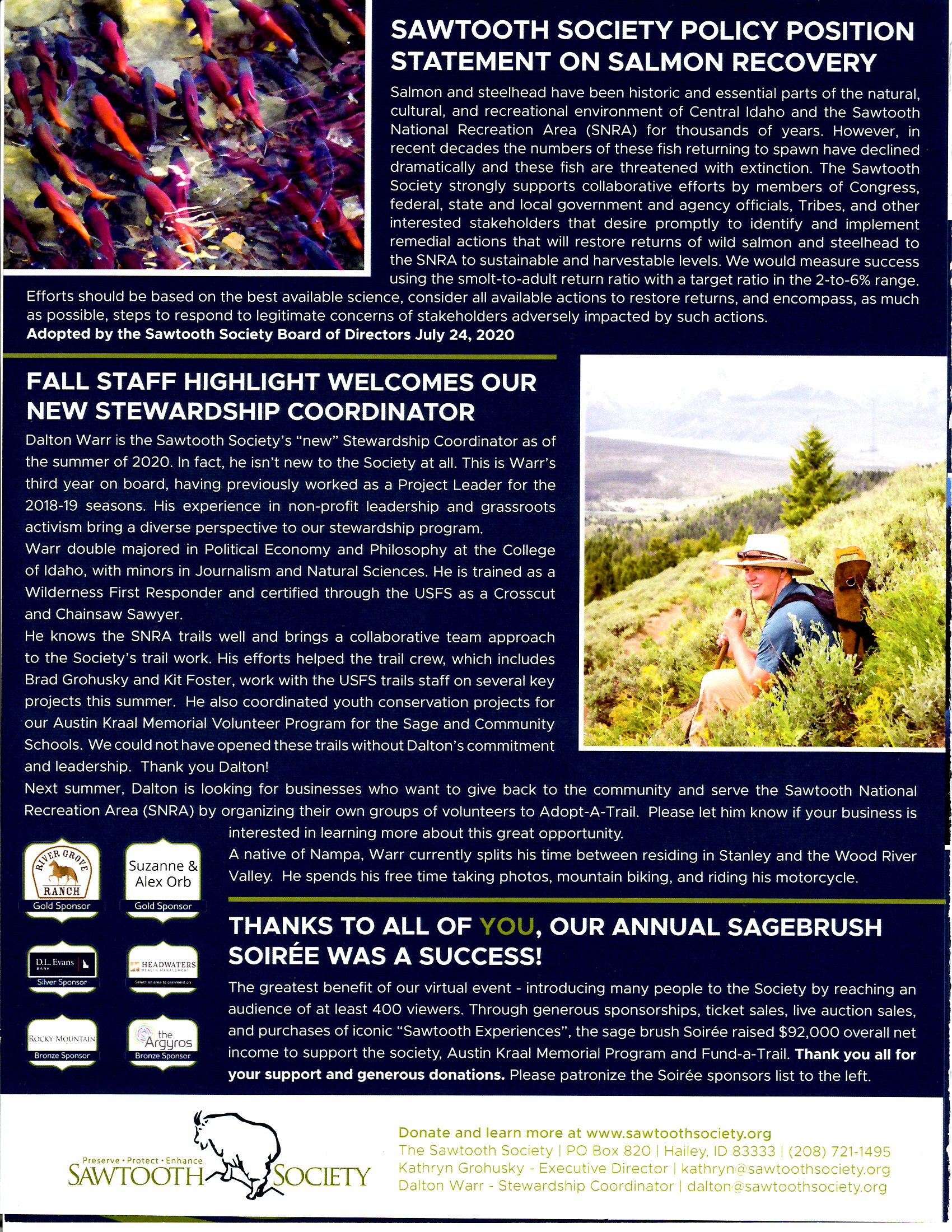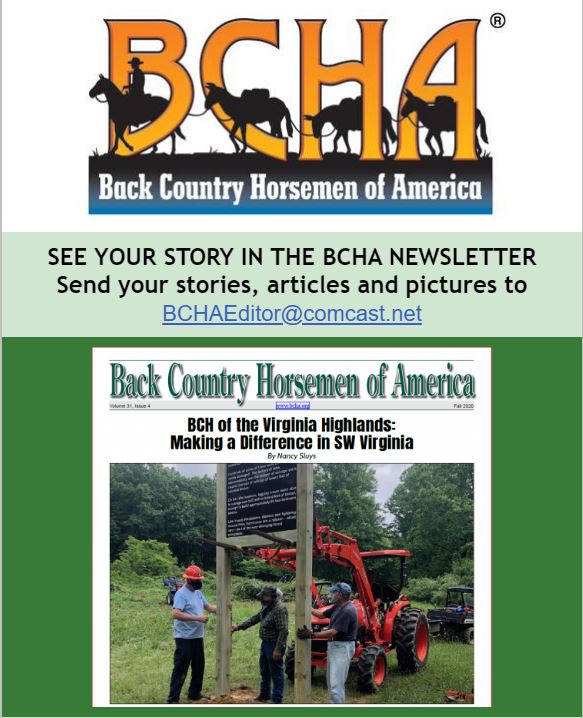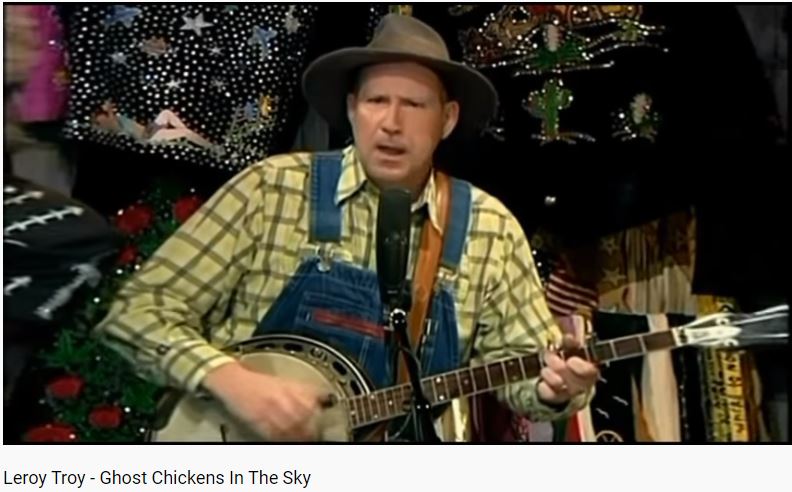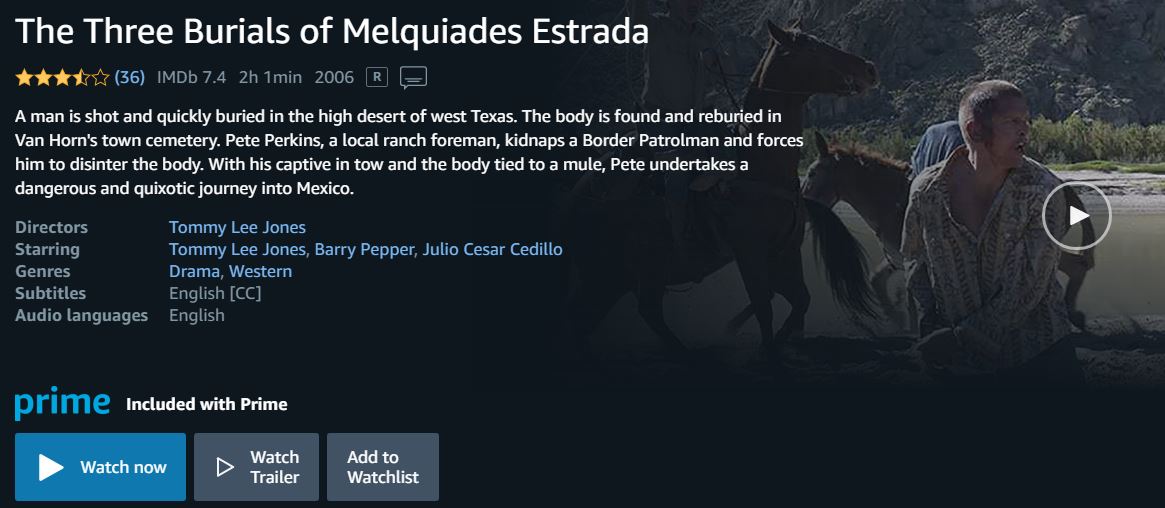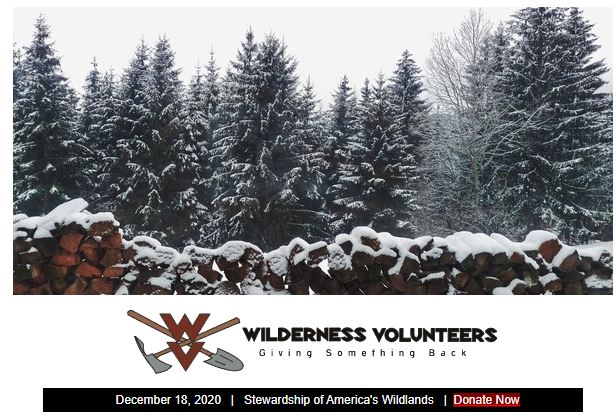
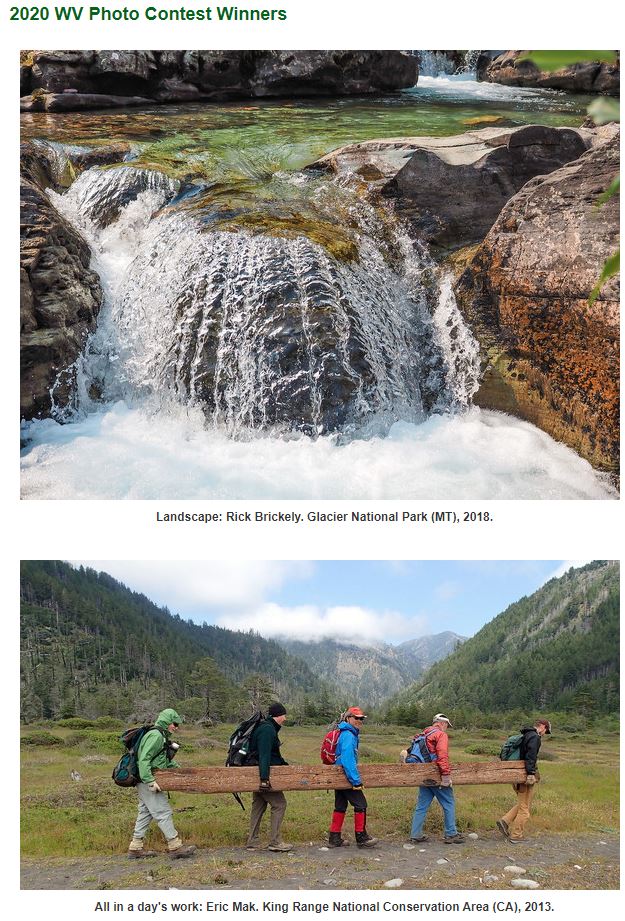
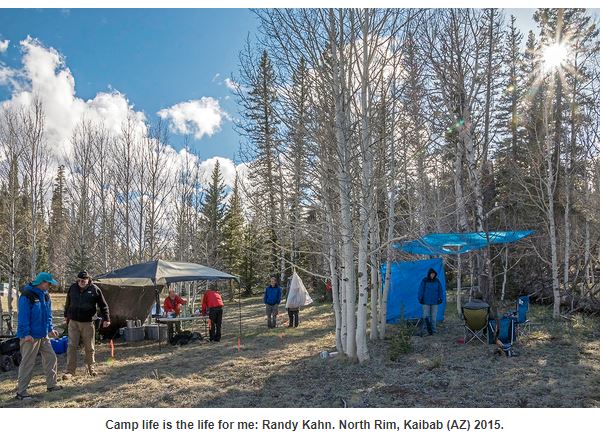
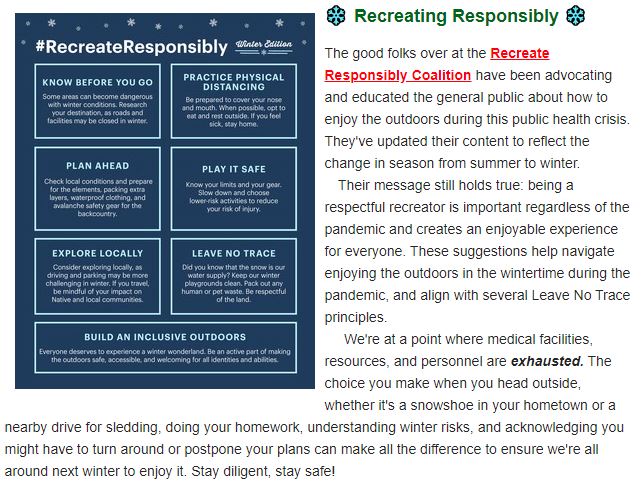
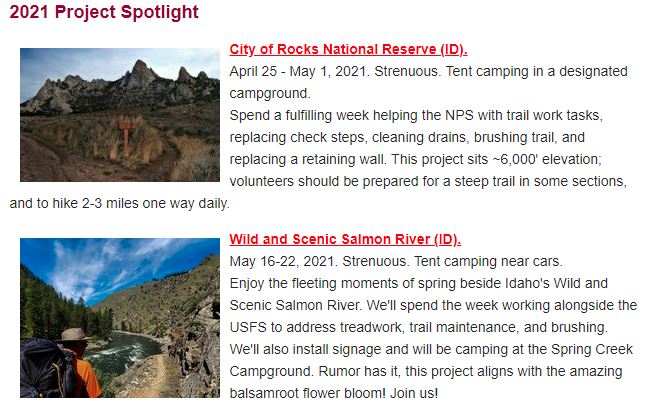
City Of Rocks Project
Wild & Scenic Salmon River Project
Imogene Lake, Sawtooth Wilderness Project (Squaw Butte will be doing pack support)
 2021 modified project protocols for volunteers
2021 modified project protocols for volunteers

As part of our membership drive, we are bringing you weekly updates about some of the programs your donations are helping to make happen!
These tools are OLD!
Since our humble beginnings in 2010, ITA volunteers have spent a decade maintaining hundreds of miles of non-motorized trail in Idaho. This means that our trail work tools have spent 10 years in the field cutting brush, digging tread, mining rock, and sawing logs. Every season our tools travel across the state, from project to project, enabling our volunteers in their stewardship of Idaho’s hiking trails. The current ITA cache is a hodgepodge of Forest Service hand-me-downs, donations from our Board and members, and additional tools paid for by supplemental grants.
These tools have served us well! Our tools traverse the ridges of the Frank Church Wilderness, summit the Sawtooth peaks, boat the wild Salmon and Snake rivers. They brave the snow and sizzle in the heat of summer. Hundreds of volunteers have taken their first Pulaski swing with an ITA tool. Our seasoned equipment has gotten crew after crew of like-minded Idahoans out in the woods to enjoy the best of what Idaho has to offer.
As ITA has continued its steady growth, our tools have been tasked with more and more. They’ve been spread thin. They’ve grown tired. There have been casualties. Every season a few of our hard-working tools succumb to the abuse they receive in their mission to keep Idaho’s trails open. Wobbly shovel heads and wonky pulaskis become the norm when tools are pushed to their breaking point. 2021 will see a continued expansion of our trail program and an increased demand on our tool cache.
With the addition of six week-long youth projects and two Women Only Week-longs, ITA will have more projects running concurrently than ever before. That’s why we are seeking to raise an additional $2,500 this year to fully outfit a 12-person crew with new tools. These tools will ensure that every volunteer that wants to help maintain Idaho’s trails has access to the tools to do so. This cache will allow us to retire some of our older tools that have served many seasons beyond their prime and help us avoid excessive tool-trailer shuttling. These tools will set up ITA for success in 2021!
Will you join us in supporting Idaho’s trails by becoming a member and helping us purchase the tools we need for a strong 2021 season? JOIN or RENEW your Membership
Schade, Nicholas E -FS <nicholas.schade@usda.gov>
Hello – On behalf of the Salmon-Challis and our trails staff, I wanted to extend a sincere thank you to all of our partners and volunteers who helped ensure that 2020 was a successful trail work season on the Salmon-Challis! In spite of the challenges that 2020 presented us all, collectively we were able to increase the trail miles maintained on the Salmon-Challis as compared to the past several years. We were able to maintain 1,181 miles in 2020. This is in large part to work completed, organized, and championed by our partners and volunteers. As many of you know, we received a few substantial grants and earmarks from the State of Idaho and the Forest Service Washington and Regional offices in the last few years to help us maintain our trails infrastructure. In many cases your support helped secure this funding for the Salmon-Challis and for you, our partners, to complete this important trails maintenance. With the Great American Outdoors Act being past this year, the Trails Stewardship Act (2016) and other recent attention on improving trail conditions, we will continue to need your support and assistance to help solve our trails issues. Thanks again for all of your help and we look forward to working with you as we head into 2021 and beyond.
Please feel free to share with others who I may have missed.
Best,
Nick Schade
https://groups.google.com/g/salmon-area-trails-group/c/rD6J3jODmQs/m/CSB5xnP9AQAJ?pli=1





A Senate Bill (S. 1695) by Senator Mike Lee, Utah which would allow mountain bikes in designated wilderness was given a hearing in early December. NWSA and other groups wrote opposing this and other measures which would weaken wilderness protections. Read more….
A coalition of groups is pushing to stop legislation in the U.S. Senate that would open wilderness areas to mountain bike use.
The coalition, which includes the American Hiking Society, Appalachian Trails Conservancy, National Wilderness Stewardship Alliance, and Pacific Crest Trail Association, maintains that there are enough trails open to mountain bikers without the need to allow them access to official wilderness.
“We strongly oppose S. 1695, and encourage subcommittee members to oppose this legislation as well,” the group said in a letter to U.S. Sens. Mike Lee, R-Utah, and Ron Wyden, D-Oregon, of the Senate Subcommittee on Public Lands, Forests and Mining, which has been considering the measure. “S. 1695 seeks to open federal wilderness areas to mountain biking, a clear violation of the 1964 Wilderness Act, the nation’s seminal conservation law. Most importantly, S. 1695 would threaten the character of the entire National Wilderness Preservation System by undermining our nation’s bedrock landscape conservation tool.”
Introduced by Lee in 2019, the Human-Powered Travel in Wilderness Areas Act would redefine “human travel” in official wilderness as that which does not involve a “propulsive internal or external motor with a nonliving power source.” When Lee introduced the measure, he said the access was needed to “enrich Americans’ enjoyment of the outdoors by expanding recreational opportunities in wilderness areas.”
Under the legislation, federal land managers — including the National Park Service — would be given the authority to decide whether to allow and how to regulate non-motorized travel in wilderness areas within their jurisdictions.
The Wilderness Act of 1964 prohibits the use of motor vehicles, motorized equipment, motorboats, and other forms of mechanical transport in officially designated wilderness.
In arguing againt the bill, the groups said the Wilderness Act “is more relevant today than ever before.”
“Our nation’s wilderness areas include only 5 percent of our nation’s public lands. In the lower 48 states, it’s merely 3 percent,” they noted. “The remaining 97 percent is open to motorized and mechanized recreation. Designated wilderness areas have a fundamentally different purpose than providing for motorized and mechanized access. In fact, that is the very purpose of the Wilderness Act – to provide for a few remote, pristine areas where nature prevails.”
They also pointed out that “(T)here remains a nearly inexhaustible supply of non-wilderness federal lands that are open to mountain biking and where additional mountain bike trails and opportunities continue to be created. In the last decade, new mountain biking trails have been developed at a historically rapid rate.” READ MORE
Bob Marshall: https://www.adirondackalmanack.com/2020/12/bob-marshalls-long-lost-arguments-for-wilderness.html
Boundary Waters: https://www.minnpost.com/community-voices/2020/12/saving-the-boundary-waters-is-key-to-solving-the-climate-and-extinction-crisis/
 Millions of Americans breathed a deep sigh of relief in early November when Joe Biden was elected the 46th president of the United States — not only because he signified a return to order and normalcy from the lawlessness of the Trump administration, but also because of his focus on tackling the climate change crisis. It is a gigantic task — as large an undertaking as any that mankind has faced. Opportunities have been missed and progress delayed because of political intransigence. One opportunity that we must not miss, which is before us right now, is the opportunity to protect the Boundary Waters Canoe Area Wilderness (BWCA) from the danger posed by sulfide-ore copper mining.
Millions of Americans breathed a deep sigh of relief in early November when Joe Biden was elected the 46th president of the United States — not only because he signified a return to order and normalcy from the lawlessness of the Trump administration, but also because of his focus on tackling the climate change crisis. It is a gigantic task — as large an undertaking as any that mankind has faced. Opportunities have been missed and progress delayed because of political intransigence. One opportunity that we must not miss, which is before us right now, is the opportunity to protect the Boundary Waters Canoe Area Wilderness (BWCA) from the danger posed by sulfide-ore copper mining.
Banning this destructive mining from the headwaters of the Boundary Waters would deliver multiple benefits of the kind critical to addressing the climate and extinction crisis, including preserving carbon sequestration; avoiding the massive energy demand of large sulfide-ore copper mines and thus eliminating major new greenhouse gas sources; and preserving a 4.3-million-acre ecosystem that provides a refuge for species threatened by climate change.
The Boundary Waters region is vital for carbon sequestration.
The 4.3 million-acre Quetico-Superior region is primarily boreal forest. Boreal forests store more carbon than any other terrestrial ecosystem — almost twice as much per acre as tropical forests. Keeping carbon locked in these forests and out of the atmosphere is a vital part of the fight to keep warming below 2 degrees Celsius. According to a federal government report prepared for members and committees of Congress, each acre of terrestrial boreal forest stores on average about 180 tons of carbon in its vegetation and soils. Destruction of boreal forest for industrial mining is a double whammy — the release of much of that carbon into the atmosphere and the loss of the capacity of the land to take up carbon in the future. The loss is even greater if wetlands are destroyed. Soil carbon levels in wetlands are nearly double the level in the terrestrial boreal forest.
Mechanical destruction of vegetation and soil is not the only harm that would result from permitting copper mining; the carbon storage assets of the Boundary Waters region (surface vegetation, soils, wetlands, and peatlands) are incredibly vulnerable to acid mine drainage – the water pollution that inevitably results from sulfide-ore mining.
Protecting the Boundary Waters is critical for greenhouse gas emission avoidance.
A leading ally of Chilean mining conglomerate Antofagasta, which seeks to develop the Twin Metals copper mine, is Minnesota Power, a local utility that feeds a group of energy-devouring industrial customers. According to MinnPost, 74 percent of Minnesota Power’s electricity is sold to six taconite mines and four paper and pulp mills. Just one taconite mine alone needs roughly the same amount of energy as the City of Minneapolis. Minnesota Power is aggressively seeking to grow its industrial customer base with a Twin Metals copper mine next to the Boundary Waters. Although Minnesota Power has started to shift away from carbon, it has two coal-fired generators (Boswell plant), is seeking to build a $700 million gas plant, and may re-commission a coal-fired plant on the North Shore of Lake Superior.
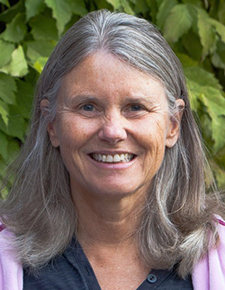
An estimate of greenhouse gas emissions, based on a 2014 Prefeasibility Report for the proposed Twin Metals mine, is 23,444,730 metric tons of CO2 over a 20-year life of the mine. This is equal to greenhouse gas emissions from adding nearly 5 million passenger vehicles to the roads for one year.
The Boundary Waters is crucial for climate adaptation and resilience.
The Wilderness Society identified 74 places in the United States that are crucial to our ability to sustain biodiversity in the face of a changing climate. These areas have three essential characteristics: (1) an especially high degree of wildness; (2) connectivity to existing protected areas; and (3) diversity of unprotected species and ecosystem types. The analysis found that the Quetico-Superior region is one of the top places in the nation with this “Wildland Conservation Value.”
A recent study by The Nature Conservancy with similar findings underscores the necessity of keeping these areas intact and undeveloped. Consistent with this, The Nature Conservancy, The Conservation Fund, and The Trust for Public Land have acquired large swaths of land across northern Minnesota to keep them protected. Allowing the creation of an industrial mining zone in the watershed of the Boundary Waters would undermine the work that these and other organizations are doing to prepare us for the future.
The Boundary Waters — the heart of the Quetico-Superior region — is a vitally important regional and national asset. It is the most visited wilderness area in the United States. It is the largest wilderness area east of the Rocky Mountains and north of the Everglades. Sacrificing this unique and vital region to sulfide-ore copper mining would destroy not only an irreplaceable recreational and economic treasure, but what is also one of our best natural assets in the fight against climate change.
Becky Rom of Ely, Minnesota, is the national chair of the Campaign to Save the Boundary Waters.
OVERWHELMING SPORTSMAN OPPOSITION TO LUCKY PEAK TRAIL
This summer, sportsmen and women rallied together to oppose the Army Corps of Engineers’ plan to construct the Lake View Trail near Lucky Peak Reservoir and within the Boise River Wildlife Management Area. IWF led the charge the organize our community push back on a project that punches through critical mule deer wintering habitat. Of the total comments received, 92% voiced opposition to the construction of the 15-mile multi-use trail.
IWF and many of our affiliate organizations expressed substantial concern about the trail proposal, including the lack of analysis of impacts to the largest migrating mule deer herd in the state and their winter habitat, increased fire risk, and the lack of enforcement during seasonal closures.
The Idaho Department of Fish & Game and the Idaho Fish & Game Commission also strongly voiced these concerns and deserve our continued support. This landscape was set aside decades prior specifically for wintering ungulates and is managed under a specific Wildlife Management Area Plan. Sportsmen and women, the Department, and the Commission are standing together to protect these investments, and the future viability of the land, wildlife, and sporting opportunities.
Last week, IWF staff welcomed the release of additional scientific data that further validates these positions. The map below was published by the USGS as part of their Ungulate Migrations of the Western United States report and outlines migration routes and stopovers of Idaho’s Blacks Creek-Danskin mule deer herd, the largest migrating herd of mule deer in the state. The Army Corps’ proposed Lake View Trail would bisect the western edge of this critical habitat.
To further highlight the importance of the greater landscape, tack on this additional migration identified just on the other side Lucky Peak Reservoir, as seen in the map below.
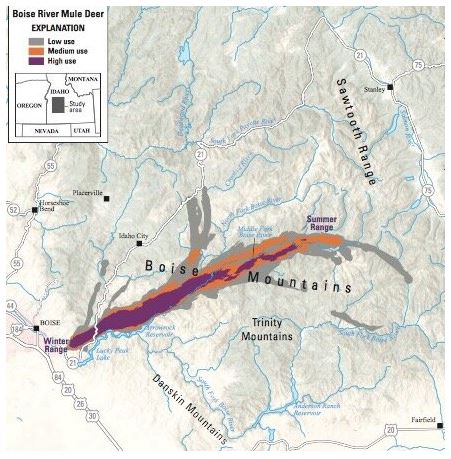
Hunters have shown that we turn heads if we unify and speak as one voice – often it is uncomfortable and unfamiliar, but this is what determines the future of our wildlife and sporting heritage. While reports like the newly released USGS publication should impact land management decisions, it is still essential that we, as hunters, raise our voices of the value of these landscapes to decision makers. As the Army Corps inches closer to a decision, IWF will continue to closely monitor this process.
To read our original blog on this issue, click here. Be sure to check out the full USGS Report to view more of Idaho’s important migrations!
BREAKING: ARMY CORPS DECIDES “NO ACTION” ON LUCKY PEAK TRAIL
The Army Corps of Engineers has just issued a “No Action” decision for the proposed Lake View Trail in critical big game wintering habitat near Boise. The No Action alternative decision is a tremendous win in the eyes of sportsmen and women who have fought for generations to protect Idaho’s largest migrating mule deer herd from encroachment of development.
The Army Corps’ proposed Lake View Trail was a 15-mile multi-use trail near the shores of Lucky Peak Lake and in the Boise River Wildlife Management Area. Idaho Wildlife Federation opposed the trail and expressed significant concerns over the trail proposal’s location, lack of enforceable seasonal closures, fire risk, and direct conflicts with Boise River Wildlife Management Plan’s management directions. IWF, along with our conservation partners, including the Upper Snake River Tribes Foundation, Idaho Department of Fish & Game, and the Idaho Fish & Game Commission raised these points to the Corps over several months- and the Corps’ Lt. Col. Childers listened. The Corps cited that the decision to take no action at this time was due to “the very high value some stakeholders place on the ecosystem outputs provided by the existing habitat conditions and traditional significance of the area.”
“Idaho Wildlife Federation welcomes the Corps’ decision to forgo plans to construct the Lake View Trail. The trail, as proposed, brought significant risks to the landscape utilized by our state’s largest migrating mule deer herd and would have undermined generations of conservation efforts dating back to the 1940s” said Brian Brooks, Executive Director of Idaho Wildlife Federation. “We will continue leading efforts to address the needs of wildlife amidst a rapidly expanding population in Idaho.”
The hills just beyond Boise to the East make up the Boise River Wildlife Management Area; highlighted in this USGS report of major ungulate migrations of the Western US. From as early as 1943, this landscape has been set aside specifically to protect the last remaining wintering grounds for mule deer and elk that migrate upwards of 100 miles to summer feeding grounds near the Sawtooths. This data is critical to showcase the value of conserving winter range at the terminal end of these annual migrations.
“IWF owes a huge thank you to the sportsmen and women who spoke up in opposition during the public comment period,” said Garret Visser, IWF’s Conservation Program Coordinator. “Conservation wins don’t come easy. It takes a lot of work to educate folks on an issue and organize them to take action, but it’s all for nothing if no one takes the step to voice their values. This decision was made possible by our voices echoing all the way to the Army Corps’ desks in Walla Walla.”
92% of submitted public comments opposed the construction of the trail. “Those numbers are remarkable,” concluded Visser. “Wildlife conservation is still such a uniting issue.”
Check out the Army Corps’ decision here.
People visit this area to experience the serenity and solitude of wilderness in the largest complex of congressionally designated wilderness areas in the lower 48 states. The designated wilderness areas in this priority area include the Frank Church-River of No Return, Gospel Hump, and most of the Selway-Bitterroot wilderness.
The majority of the 9,200 miles of trails in the priority area are in remote locations that make access to conduct routine trail maintenance difficult. Portions of the trail are currently impassable due to substantial deadfall and landslides created by wildfires and wind events.
The trail maintenance backlog and the impacts of wildfires have inspired the cooperation of wide-ranging organizations and entities in support of the trail system to improve public access. Together, the Nez Perce-Clearwater, Bitterroot, Payette, Boise, and Salmon-Challis National Forests and partners are meeting challenging conditions by leveraging limited federal trail maintenance budgets.
Download a map of the trail maintenance priority area (PDF)
Examples of Trail Maintenance Needs
- Remove hazard trees and logs over the trail
- Remove overgrown brush
- Repair and replace drainage structures
- Conduct general trail maintenance
- Complete trail reconstruction and reroutes
Our Partners
Partners supporting this priority area include:
- Idaho State Trail Ranger Program (Idaho State Department of Parks and Recreation)
- RTP Grants (Idaho State Department of Parks and Recreation)
- Idaho Department of Fish and Game
- Idaho Conservation League
- Idaho Outfitters and Guides Association
- Licensed and Permitted National Forest Outfitters
- Boise Forest Coalition
- Selway-Bitterroot Frank Church Foundation
- Idaho Trails Association
- Clearwater Basin Collaborative
- Backcountry Horsemen of Idaho
- Idaho Aviation Association
- Conservation Corps
- Montana Conservation Corps
- Idaho Conservation Corps
- Motorized User Groups
- Dust Devils
- High Mountain Trail Association
- High Country Snowmobile Club
- Idaho Pathfinders Association
- Valley Cats Snowmobile/ATV Club
- Lewis and Clark ATV Club
- Public Land Access Year-Round, PLAY
Learn More & Get involved!
To know more about trail maintenance efforts in this priority area, contact:
Kent Wellner, Regional Trail Leader
Email: kent.wellner@usda.gov
Phone: (406) 329-3150
Larry R. Velarde, Regional Trail Leader
Email: larry.velarde@usda.gov
Phone: (801) 625-5205
Adam Larson, Trails Supervisor
Payette National Forest, McCall Ranger District
p: 208-634-0419 adam.larson@usda.gov
Savannah Steele, Trail Supervisor
Boise National Forest, Lowman Ranger District
P: 208-259-3726 Savannah.Steele@usda.gov
Jascha Zeitlin, Recreation Specialist
Payette National Forest, West Zone
p: 208-549-4224 Weiser Ranger District
p: 208-253-0113 Council Ranger District
c: 801-831-9459 jascha.zeitlin@usda.gov

